The Red Centre of Australia has been on my bucket list since I was a child. Growing up in Australia, I heard a lot about the magnificence of Uluru and the incredible colours of the desert. It’s not that I never had the opportunity to visit. My parents tried to convince me to join them on a road trip when I was seventeen. But, with all the overseas adventures I wanted to do, and the age-old attitude that Australia will always be there, I put it on the back burner and turned my attention elsewhere.
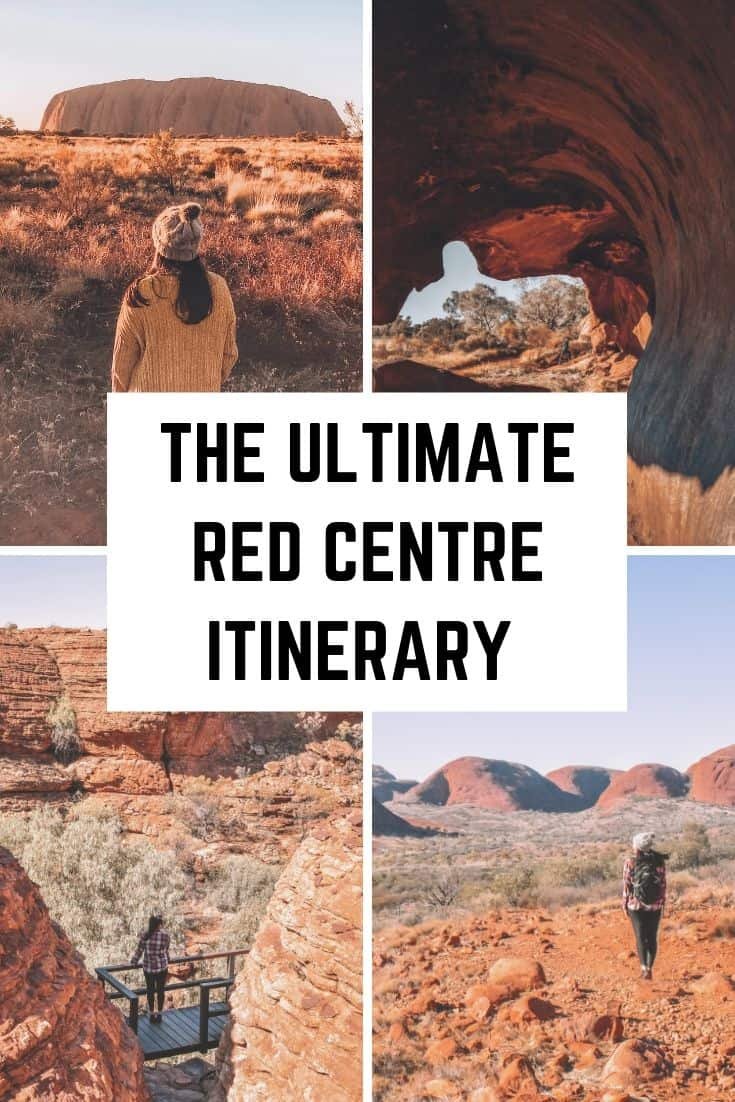
When I heard about the 30-day Greyhound Australia Whimit pass, my thoughts instantly turned to the Red Centre. I could save myself a fortune just by bussing it to the heart of Australia, and I wouldn’t have to worry about the stresses of driving myself. But still, the idea of travelling alone as a solo female had me wary.
That’s when I heard of The Rock Tour– the perfect three day Red Centre itinerary that would help me tick off every one of my Red Centre dreams.
The Rock Tour is a Northern Territory owned company since 2006 who specialise in budget-conscious travellers looking for a high-quality tour and cultural experience of Uluru at an affordable price. They offer several variations of their itineraries, however, the best, in my opinion, is the 3-day-2-night Alice Springs to Alice Springs round trip.
The Rock Tour itinerary is specifically designed to give tourists a fun and genuine Aussie camping experience of The Red Centre at an affordable price. And that is exactly what they do!
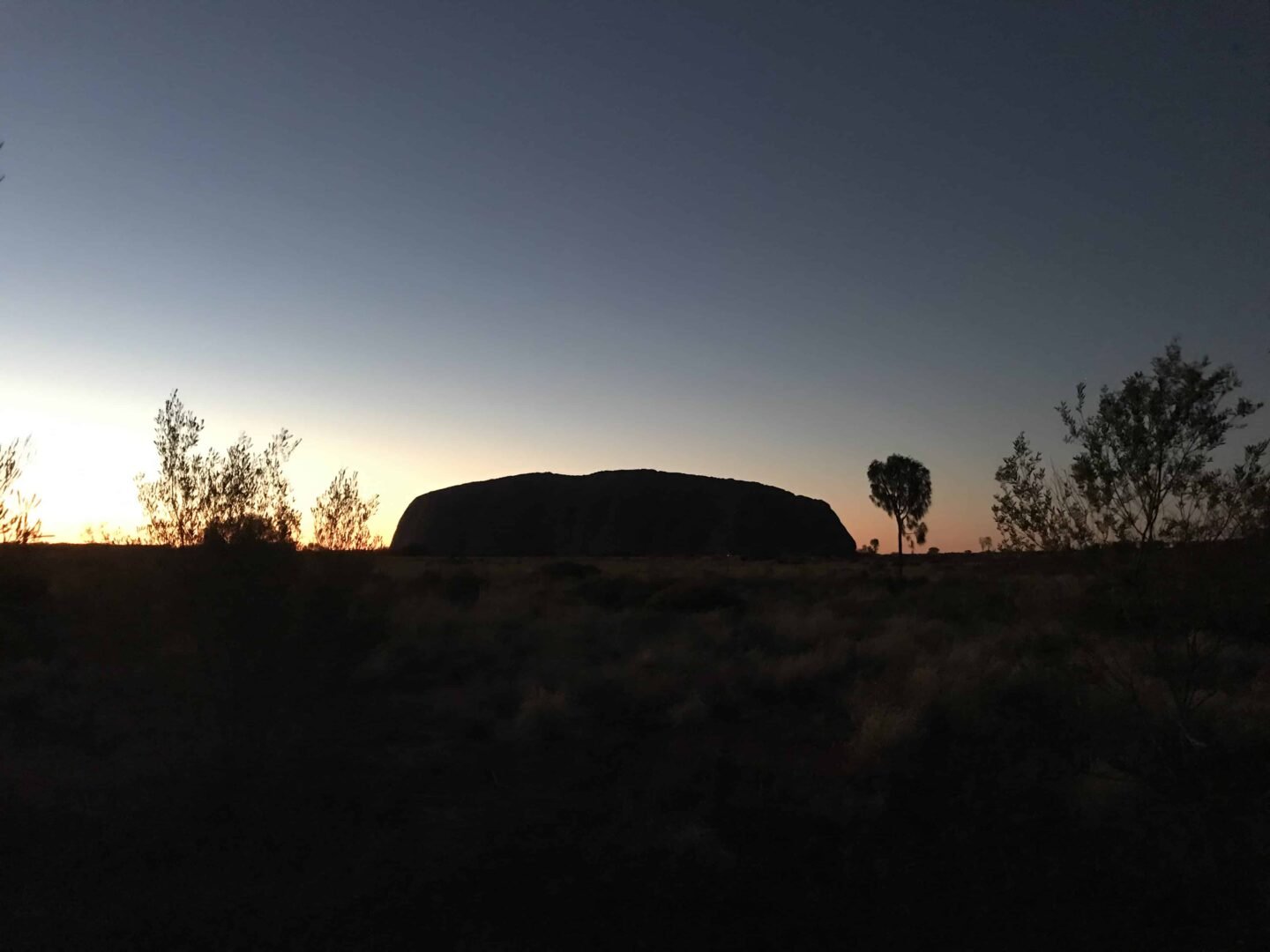
Leaving Alice Springs
The tour started in Alice Springs at the ripe time of 5 am. The drive to the Uluru-Kata Tjuta National Park is quite a long one, so we each got picked up from our accommodation and straight on the road. Most of us slept the first few hours of the trip until the sun began to rise over the red desert, which offered one of the first glimpses into the gorgeous outback we were about to explore!
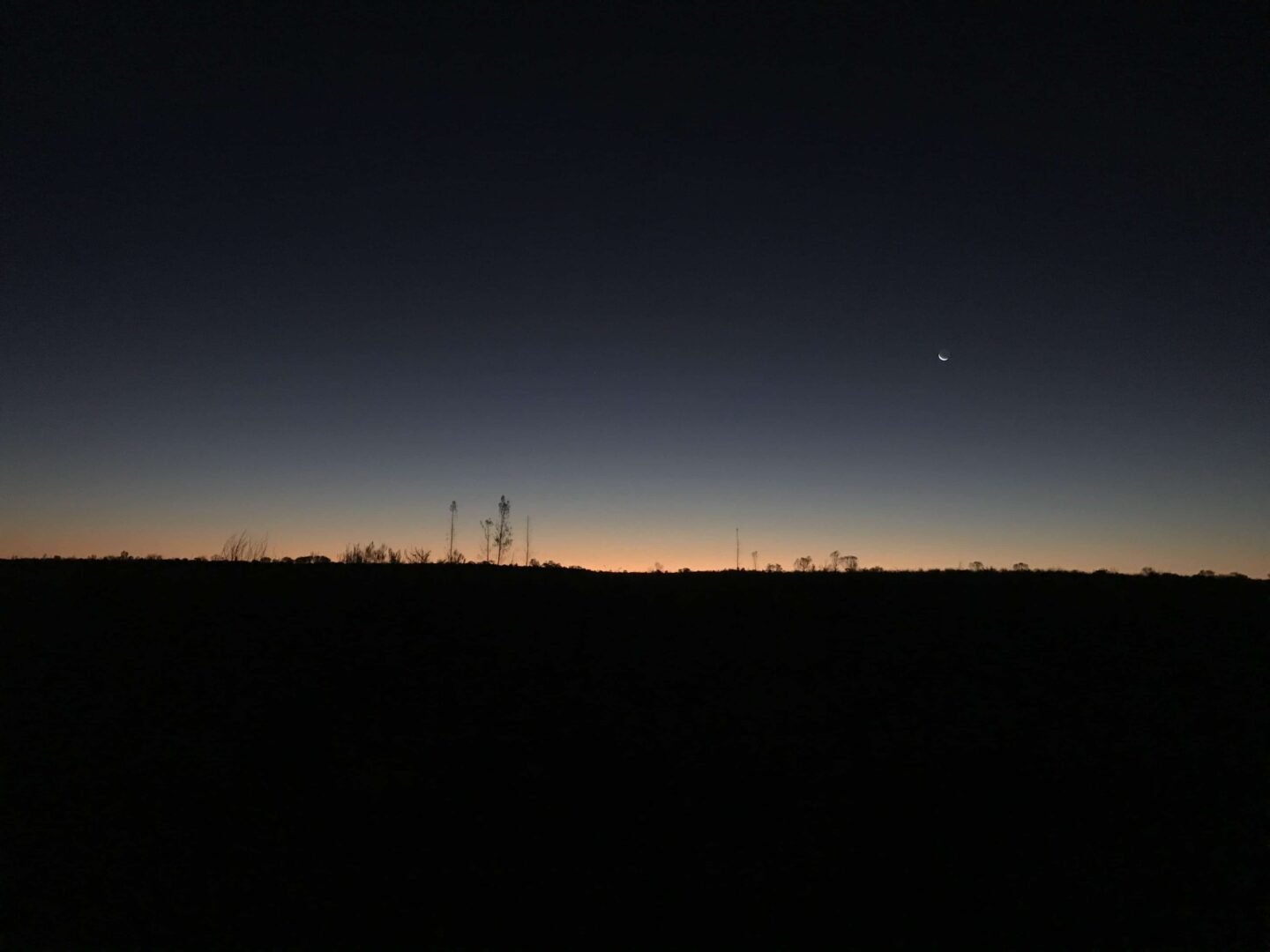
After a pit stop at the Erldunda roadhouse, the last turn off before entering the Uluru-Kata Tjuta National Park, we were each revived by a coffee and some fresh air. It was there that our tour guide, Ben, introduced himself and gave us an introduction to the tour we were about to do.
Then, off we went. First stop: Kings Canyon!
The drive from Erldunda to Kings Canyon started out with everyone introducing themselves. On board, we had two Parisians, two people from Switzerland, three Americans, two Chinese Girls, a German, the guide from New Zealand, as well as myself representing Australia.
Time flew by as we each got to know one another. I found it fascinating hearing everyone’s experiences in Australia so far. The consensus? Vegemite was gross, border security was the most epic TV show, everything in Australia was dangerous, Milo was delicious (even with just water), cherries were the most popular fruit, and Koalas were adorable.
Arriving at Kings Canyon
When we arrived at Kings Canyon, it was finally time to stretch our legs and hike! We filled our water bottles with the recommended 1L per hour we planned on hiking, and off we went, up into the beautiful wilderness of the Australian outback.

This part of the trip was one of my absolute favourites. If I had gone all the way to The Red Centre of Australia just to see this, it would have been worth it. I’d seen images of the Canyon before, but nothing prepared me for the epic beauty of nature quite like a hike through the rugged, outback terrain.
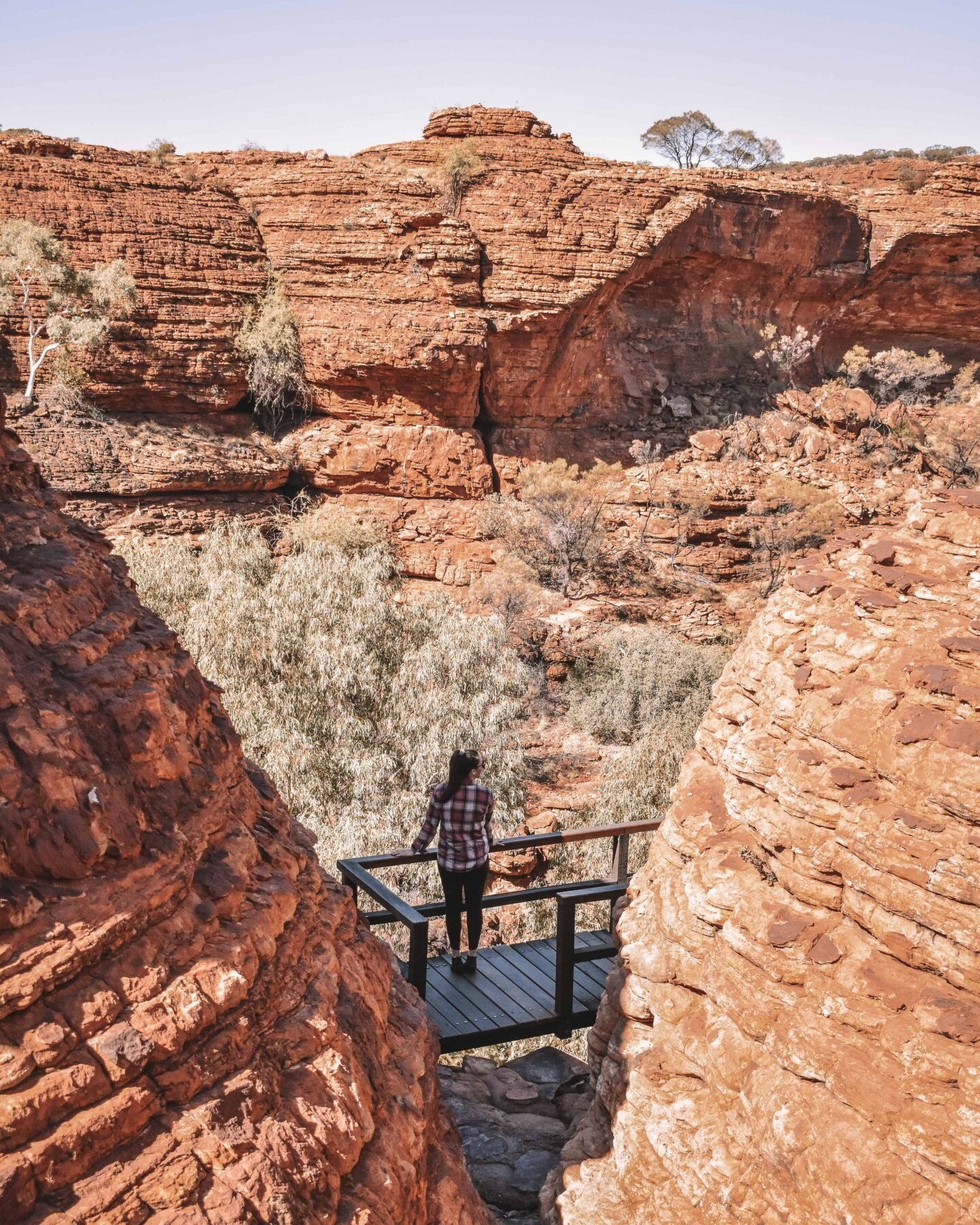
The hike begins with a 500 step climb to the top of the rim. This is the most strenuous part of the rim walk. Once at the top, walkers are treated to scenic views and stunning canyon scenery.

In total, the rim walk is 6km along the upper rim of Kings Canyon. It was short (taking us a little less than 3 hours), incredibly scenic, and just challenging enough to keep things fun. Walking along the red stone paths, getting a bird’s eye view of the outback, and the awesome views of the canyon walls were incredible.
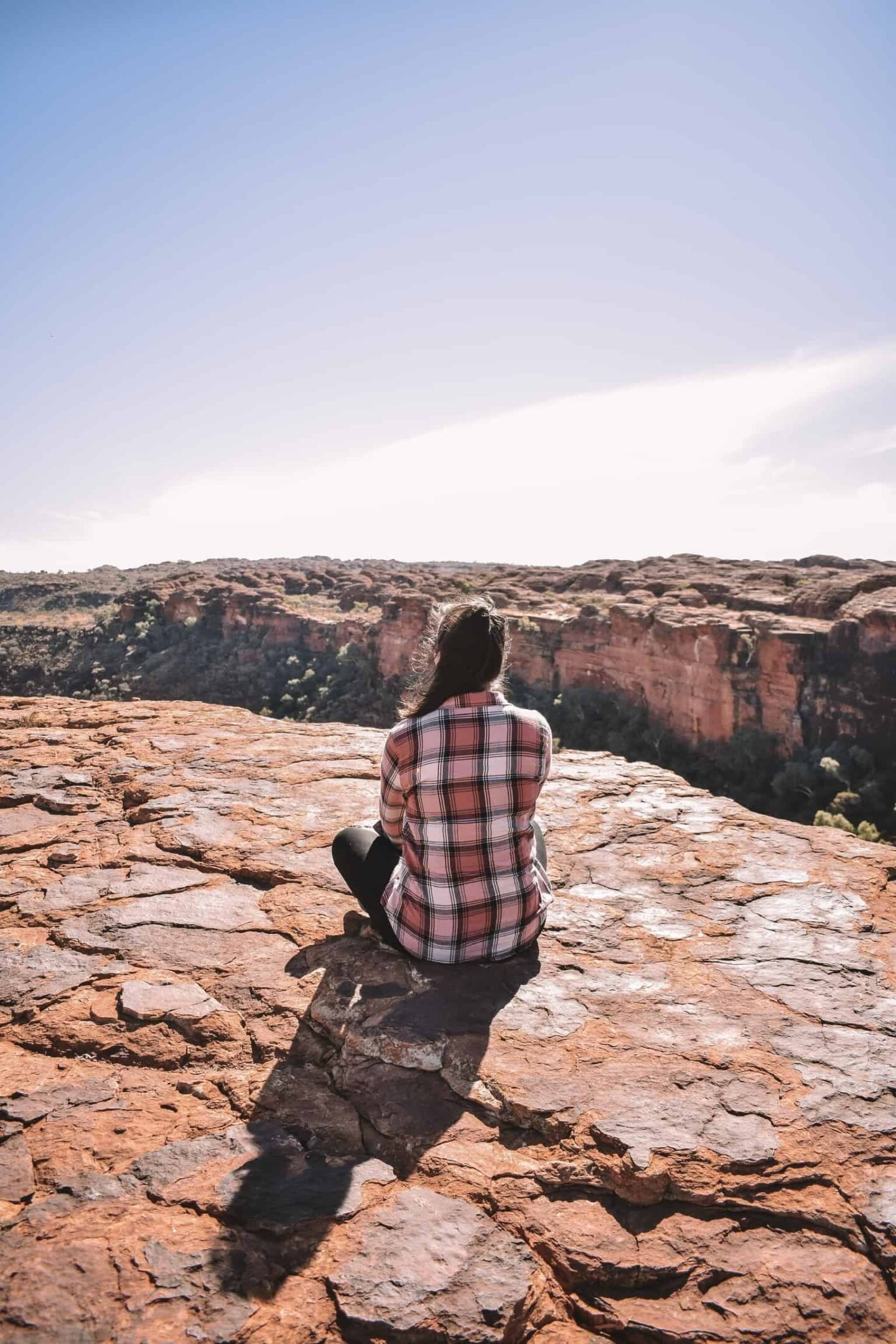
The landscape here is amazing. The palette of colours, with the reds and oranges of the rocks, the green leaves on the trees, the small patches of bright blue sky, and the white puffy clouds, was gorgeous. I loved it so much that I was taking a record number of photos, which speak for themselves!
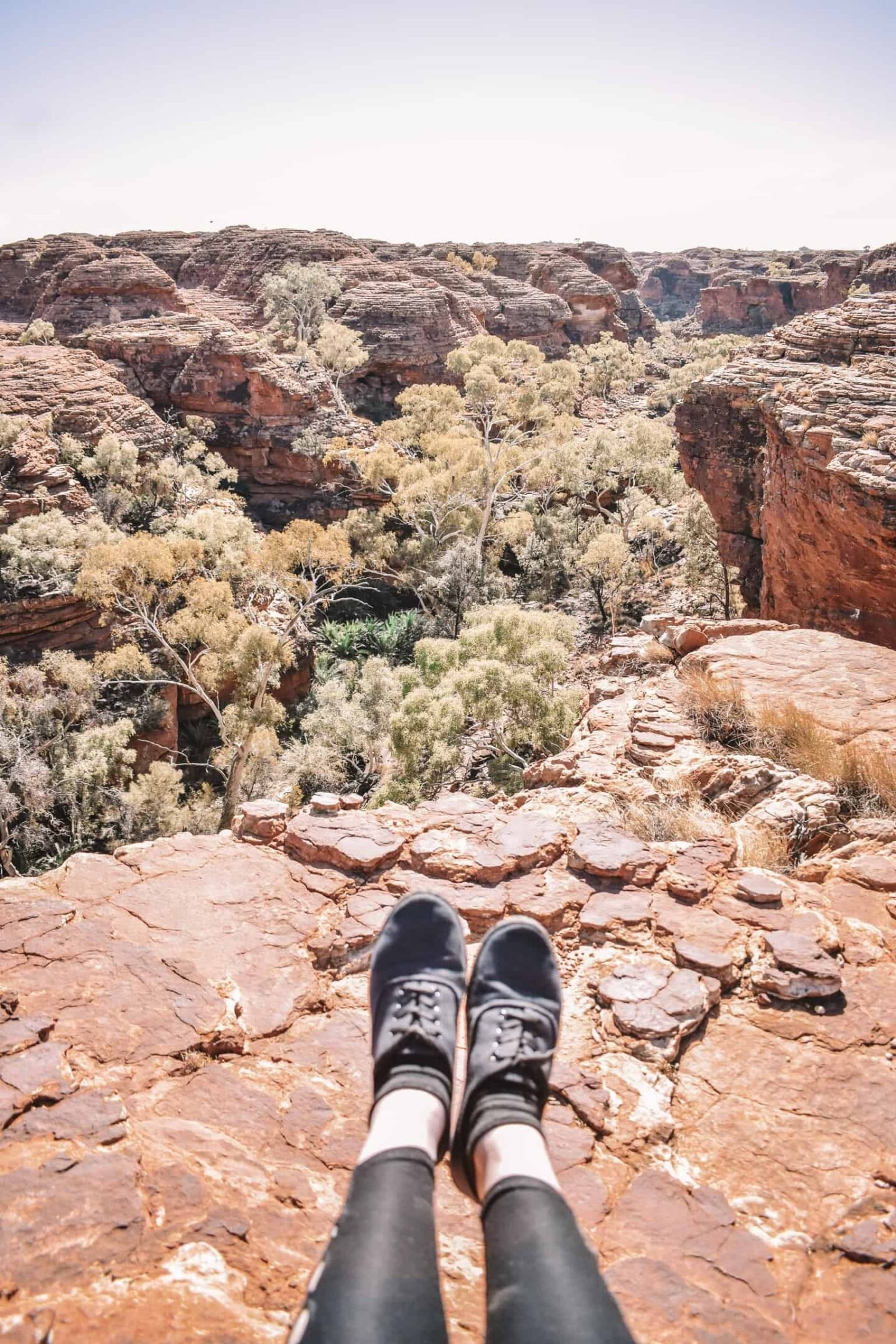
Picking Firewood for camping
I’m Australian; I’ve grown up camping and travelling outback areas many of times, but one thing I’d never done, despite the countless fires I’d grown up having on friends properties and cold nights camping with my family, was pick firewood. When the tour guide, Ben, pulled over on the side of the road, we were all fretting something was wrong. Had we hit a large animal? Were we having engine problems?
Suddenly a file of Australian horror movies flashed through my head. Stuck in the middle of the Australian desert with no mobile reception was the last thing any of us wanted to experience.
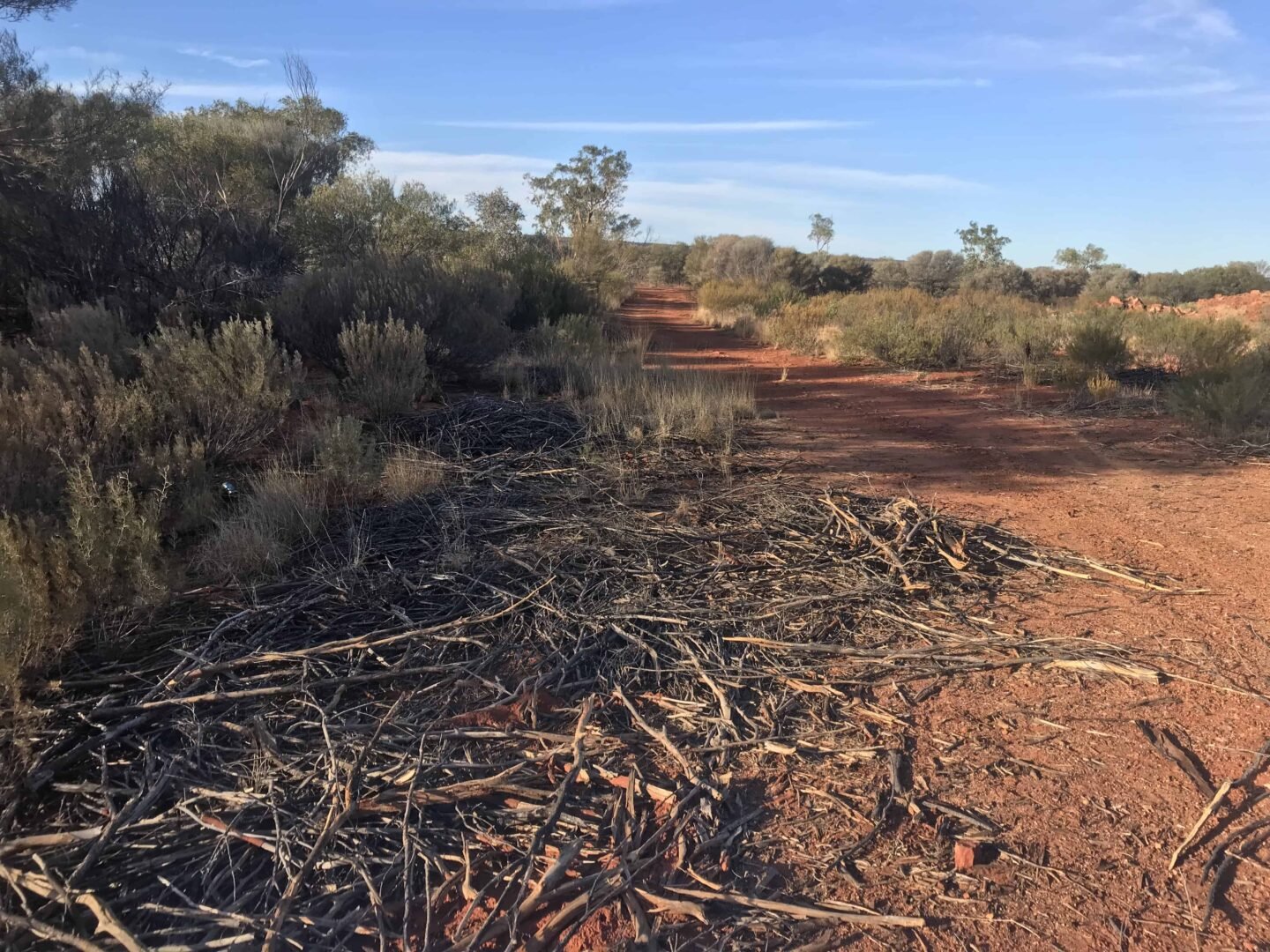
Thankfully, Ben had noticed the perfect pile of sticks- firewood! As a group, we collaboratively sourced, cut, and tied down the firewood that would be our only sense of warmth for the winter’s night ahead.
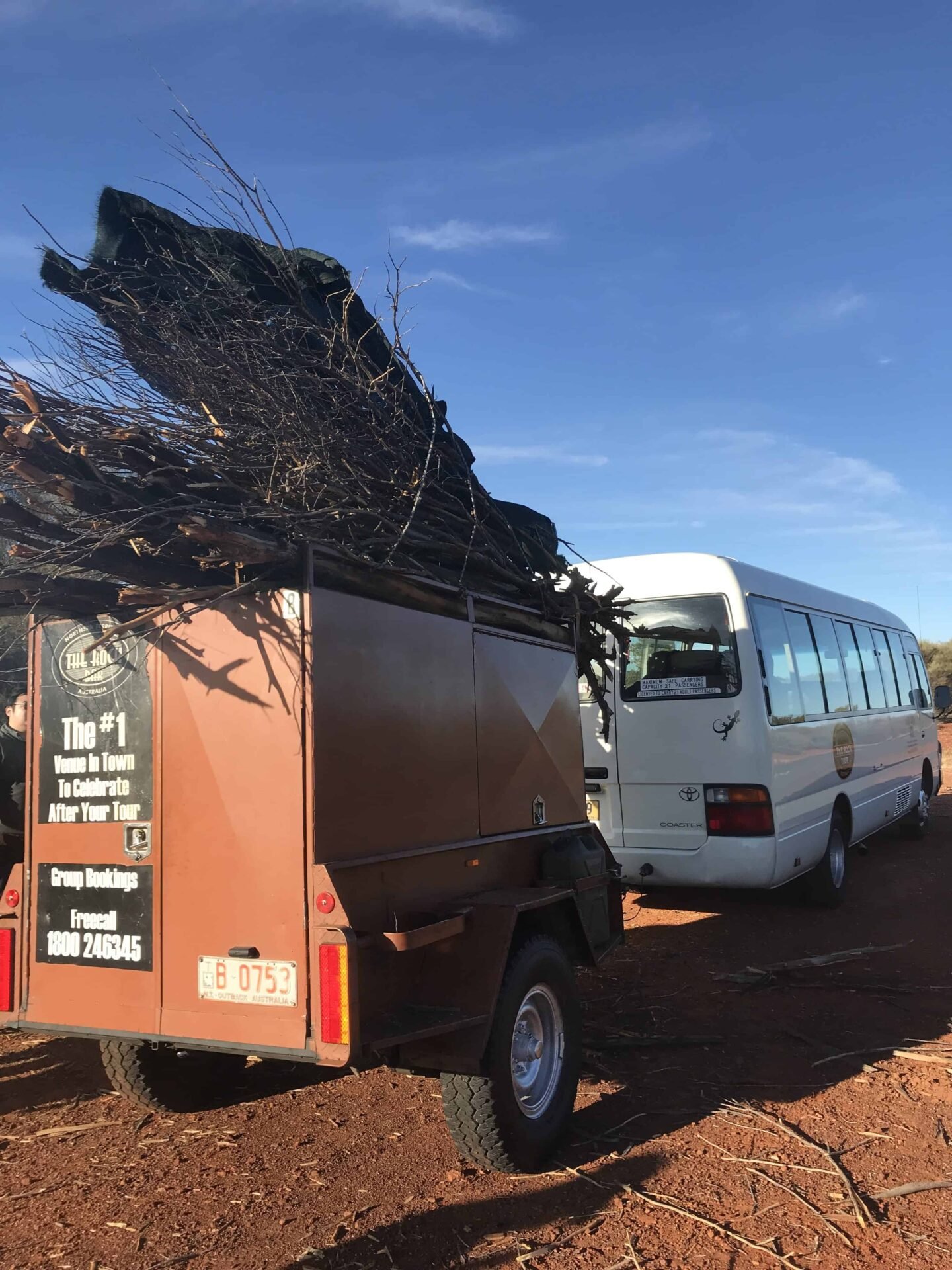
Although I think my firewood skills are far from good enough to keep me alive if I ever find myself alone in a desert, the experience was one for the books!
Camping and Stargazing
Having the opportunity to free camp in the middle of the Australian desert is something I recommend every person should add to their bucket list. There’s something about the fresh air, the rustle of dingoes stalking their prey in the night, and the scent of burning logs on the fire that fill your soul with an irreplaceable sense of peace.
It’s an experience The Rock Tour knows how to put on perfectly.
We made camp at the secret Rock Tours location just as dusk was setting in. While half the group set about creating the biggest and best bonfire I’d ever seen, the other half created an authentic camping dinner- cooked entirely with the coals of the fire.

Like every other meal I had on this tour, the dinner far exceeded my expectations. As a vegetarian, I expected that outback camping would entail eating two-minute noodles or cold bread with vegemite. Instead, I had the most delicious vegetarian chilli con carn!
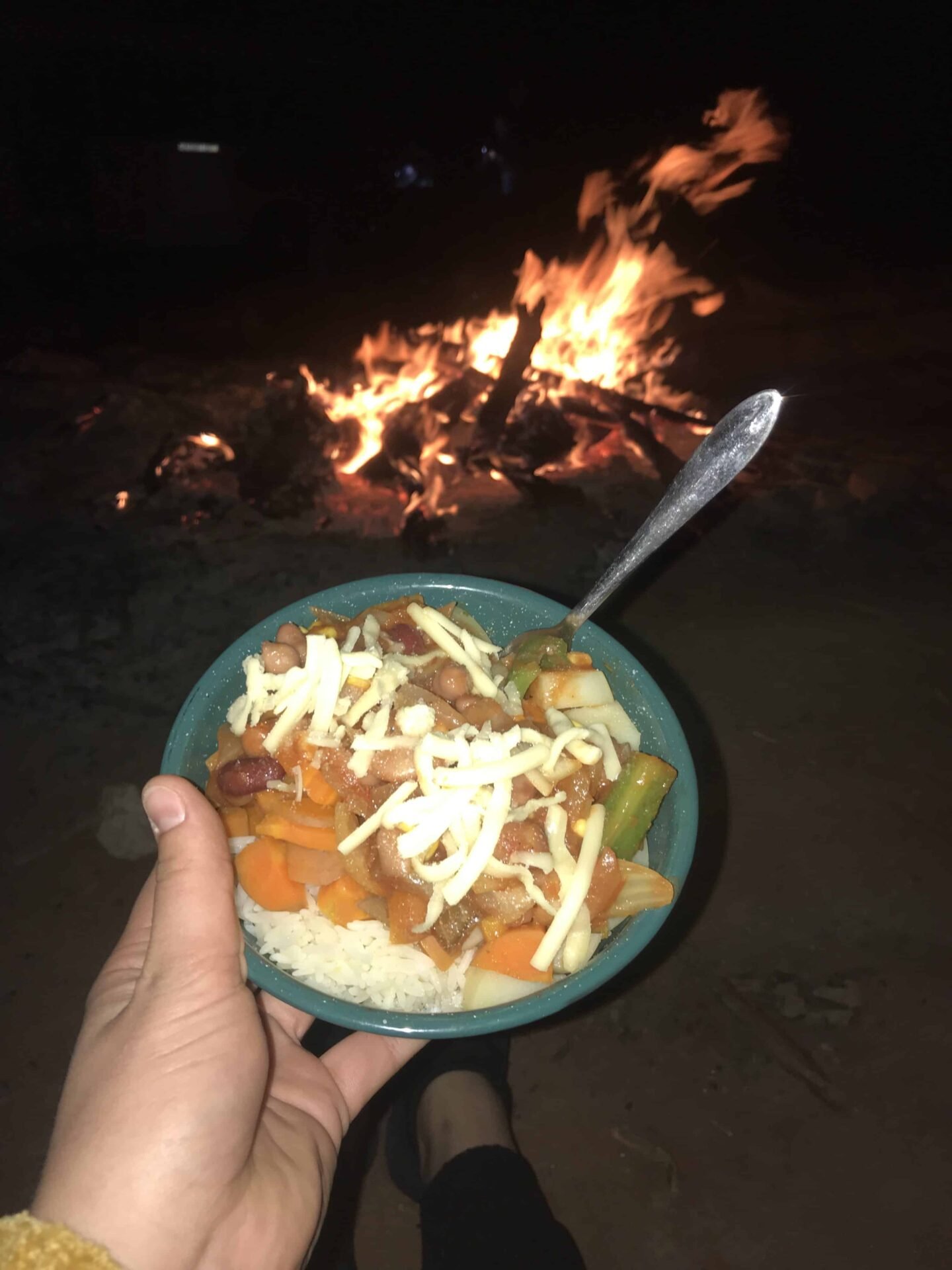
After the spectacular sunset, and after we ate the delicious meal we prepared- true camper style- we got to sit back and look up at the quarry that revealed itself above us.
No amount of leaning back could ever encapsulate the blanket of stars that spread out above. The Southern Hemisphere is home to some of the most amazing views in the galaxy, and it was right there before us.

After taking our turn at Astrophotography, we each unrolled our swags and settled in for the night. Although I think I half froze to death throughout the night (winter in the outback is no joke guys), the sound of the crackling fire and the fresh, open air of the Australian Outback was enough to make the experience one of the best nights I’d ever had.
Kata Tjuta Sunrise and Breakfast in the Red Centre
You’ve probably seen hundreds of photos, postcards and TV commercials of Uluru and Kata Tjuta at sunrise, but it’s a place you truly have to see and feel for yourself.
We had risen before dawn and packed up the campsite under the blanket of stars still vibrant as ever. Then, off we went to see our first glimpse of the magnificent Uluru.

For our first Uluru sunrise, we headed to the Talinguru Nyakunytjaku lookout. Be warned, this is where hordes of people and tour buses converge. But, it was the perfect place to get views of Uluru and Kata Tjuta as the sun began to rise. Plus, I found that most people left as soon as there was light in the sky, meaning the entire place was empty about five minutes after sunrise.
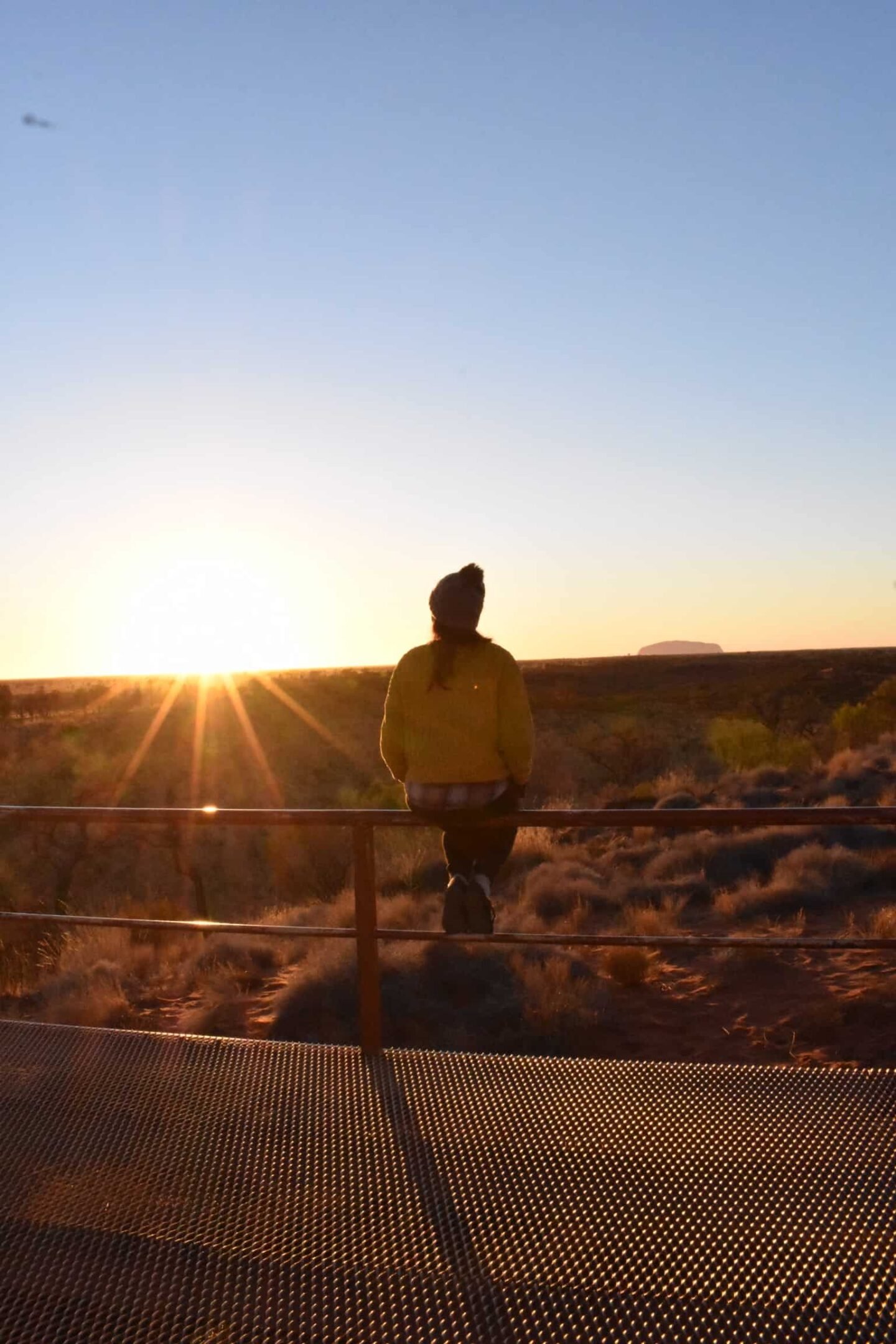
Even though you are still quite a distance from Uluru and Kata Tjuta, that first sighting is something special.

While enjoying the views of the sunrise, Ben was setting up breakfast for everyone- Camper style.

Nothing sets your soul on fire more than camper-cooked vegemite on toast and hot coffee like overlooking Uluru and Kata Tjuta at sunrise.

Kata Tjuta and Valley of the Winds
After breakfast, we headed off for a full day of adventuring around the national park. Our first destination: Kata Tjuta.
Once known as the Olgas, the rock formation known to the local people as ‘many heads’ is Uluru’s cousin, possessing similar spiritual energy and formed by the same event that created Uluru hundreds of millions of years ago. This was an intercontinental event that thrust sedimentary rock above Earth’s surface.
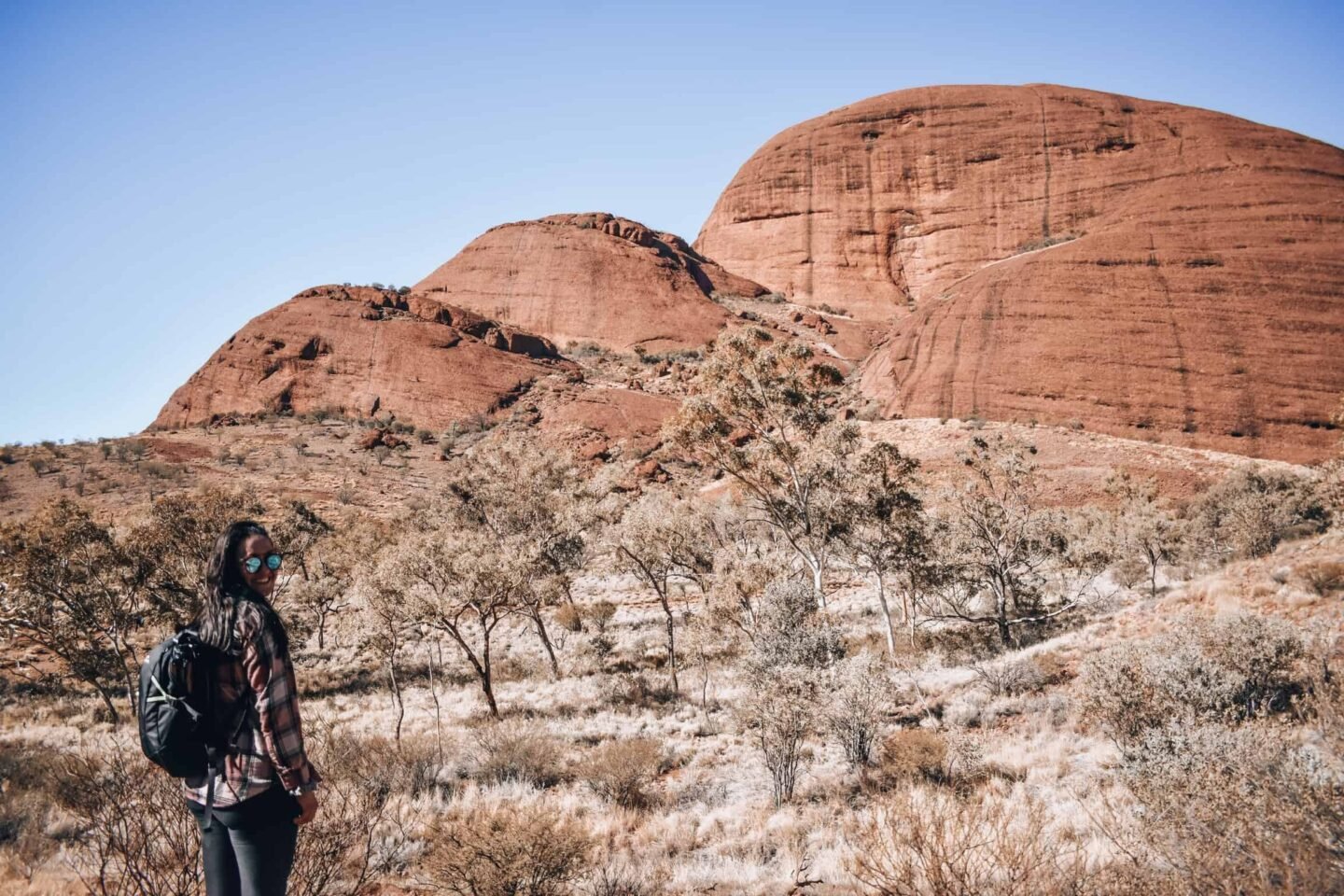
Kata Tjuta, much like Kings Canyon, was one of those deliciously soul-happy walks, where you feel at one with nature. It’s only a 7.5km walk, but the Valley of the Winds takes you on a journey.
A journey of self.
A journey of wonder.
A journey of nature.
There’s the sense of mystery and confusion and wonder that can overwhelm any sense of space here.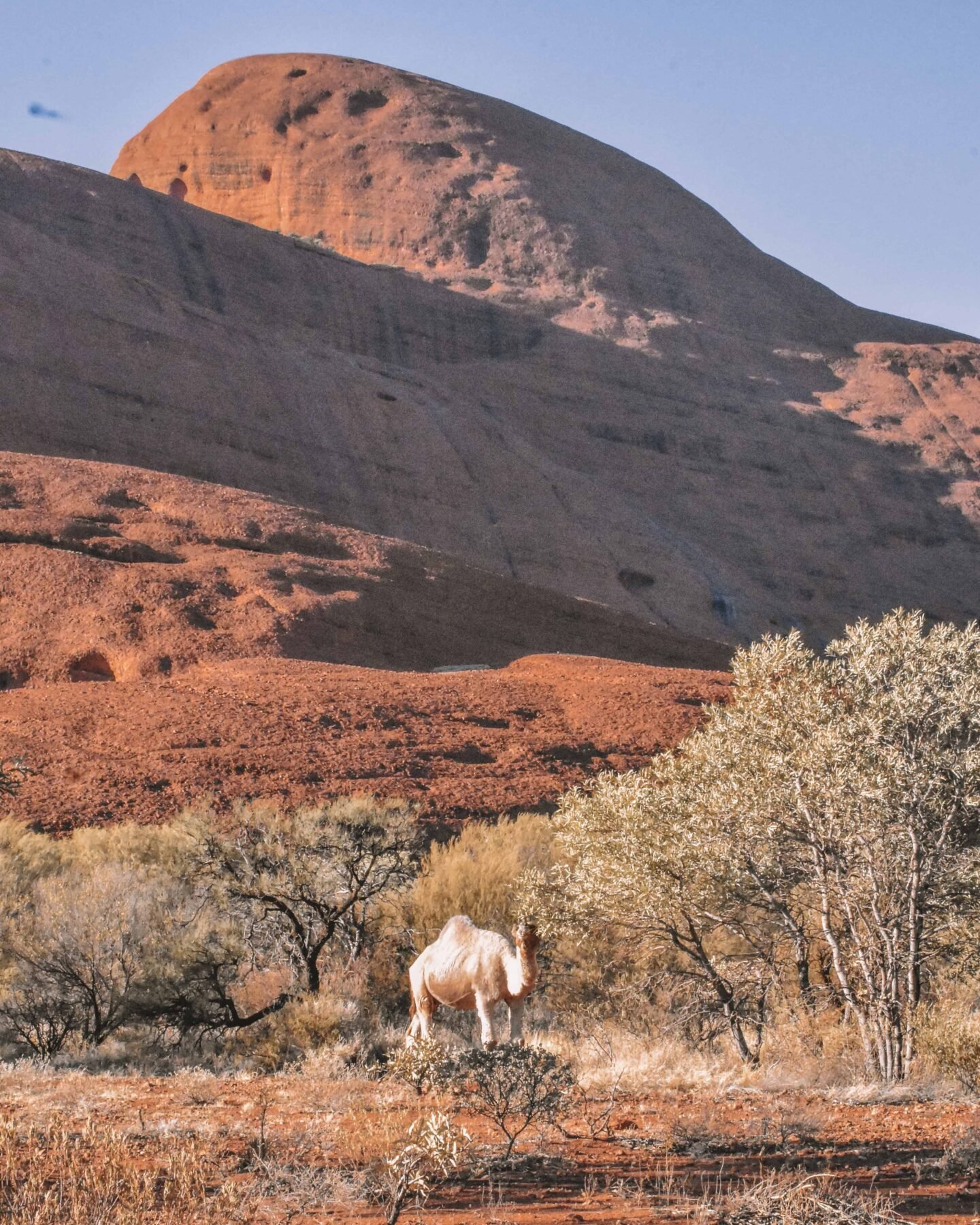
The start of our walk saw us greeted by a wild camel. This was the second camel I saw on my trip, and the only wild animal my tour mates got to see. What a treat!
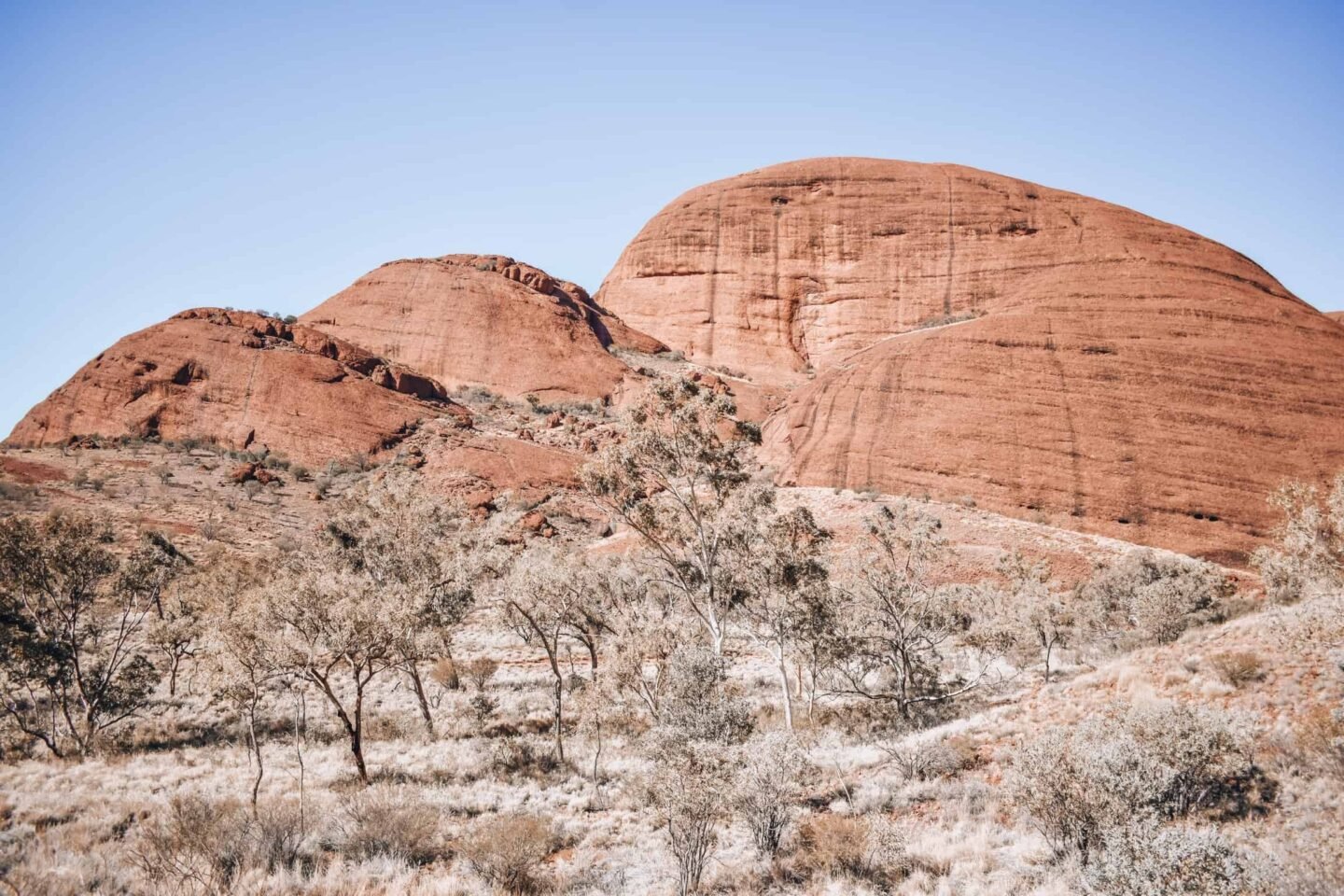
The Valley of the Winds lives up to its name. We’d been walking for quite a while before the cool (entirely forceful and rather terrifying) breeze finally hit us. It was freezing but gave us the perfect glimpse into the spiritual wonder of the place.
When you stop at the bottom, it’s a good time to look around and take in the sights. It looks like most other places around the valley we had seen; full of grass, rocks and trees and framed by the incredible domes of the Olgas, but here the views spread out for miles and miles.
In places like this, it is important to take a moment to take in and appreciate your surroundings. It’s almost as if the Earth speaks to you. In the quiet, I heard oceans and streams, passion and fury, life and death. The story of the past, the present, and the future all warped into the magnificent land.
The wonder in which the Earth holds almost moved me to tears.
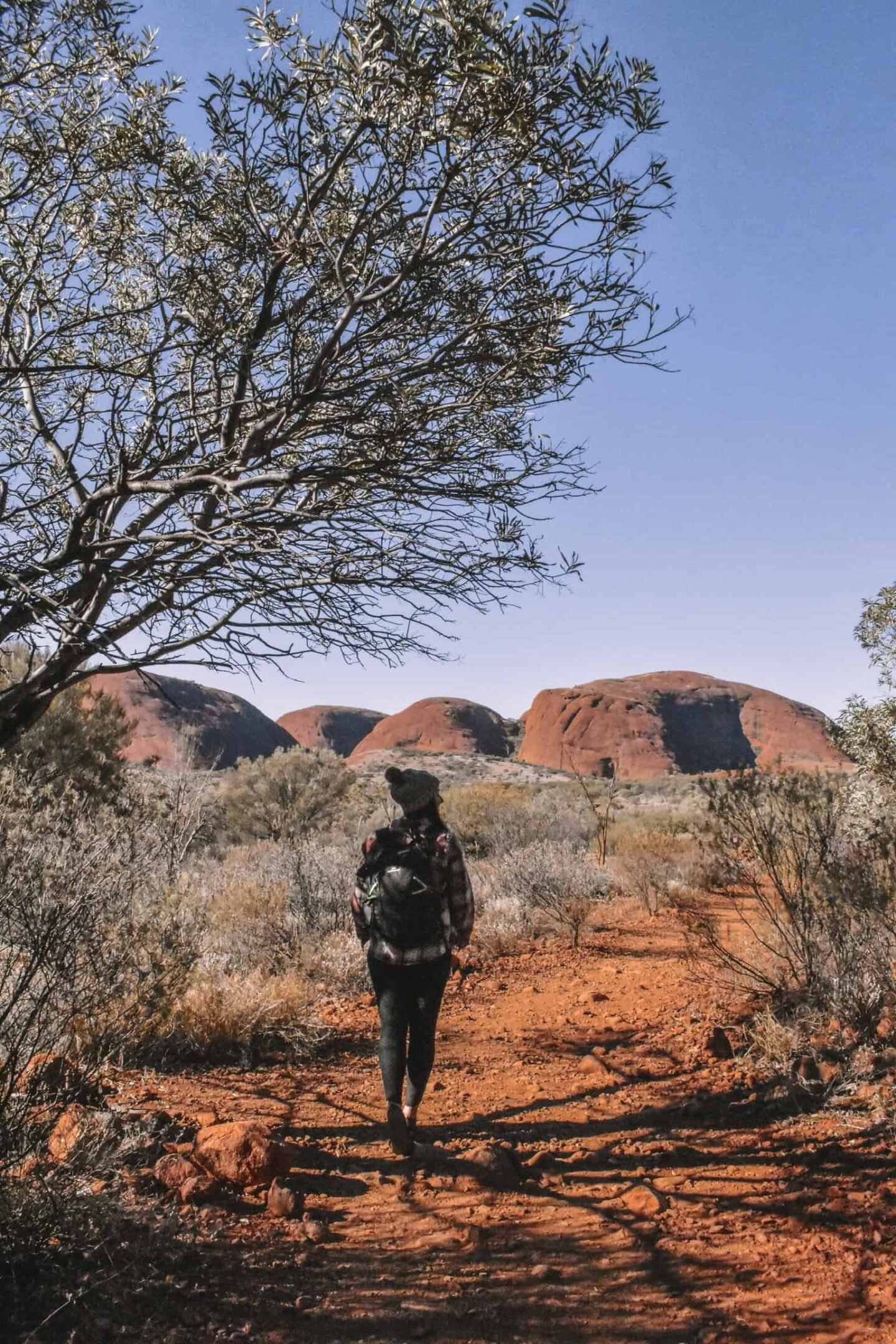
As a group, we were given a two-hour timeframe to walk Kata Tjuta. It was a brisk walk, and one I otherwise would have taken a day to do. But, trying to get it done in time while also stopping to take hundreds of photos was an exciting adventure myself and my tour mates didn’t take lightly.

The Culture Centre
We were dropped off at the culture centre not long after lunch. Here, you can learn about Anangu culture (the local indigenous population) and the parks natural environment through exhibits and free presentations. There are also displays, an information desk, Aboriginal art galleries and several little shops and facilities like a cafe and fresh water.
The culture centre was an interesting stop on the trip! Although I’d studied a lot about the aboriginal culture in my degree, I was intrigued to learn about the local cultures of the Uluru-Kata Tjuta National Park and how they had been affected by tourism over the years.

While the others finished up inside the culture centre, I took a time out to relax and reflect on the day we’d had. What things we’d seen; what things we’d done.
Then, I was joined by a friend.
Then two.
Then, thousands.
They aren’t kidding when the guidebooks recommend a fly net for anyone who visits the red centre- the flies are BAD.
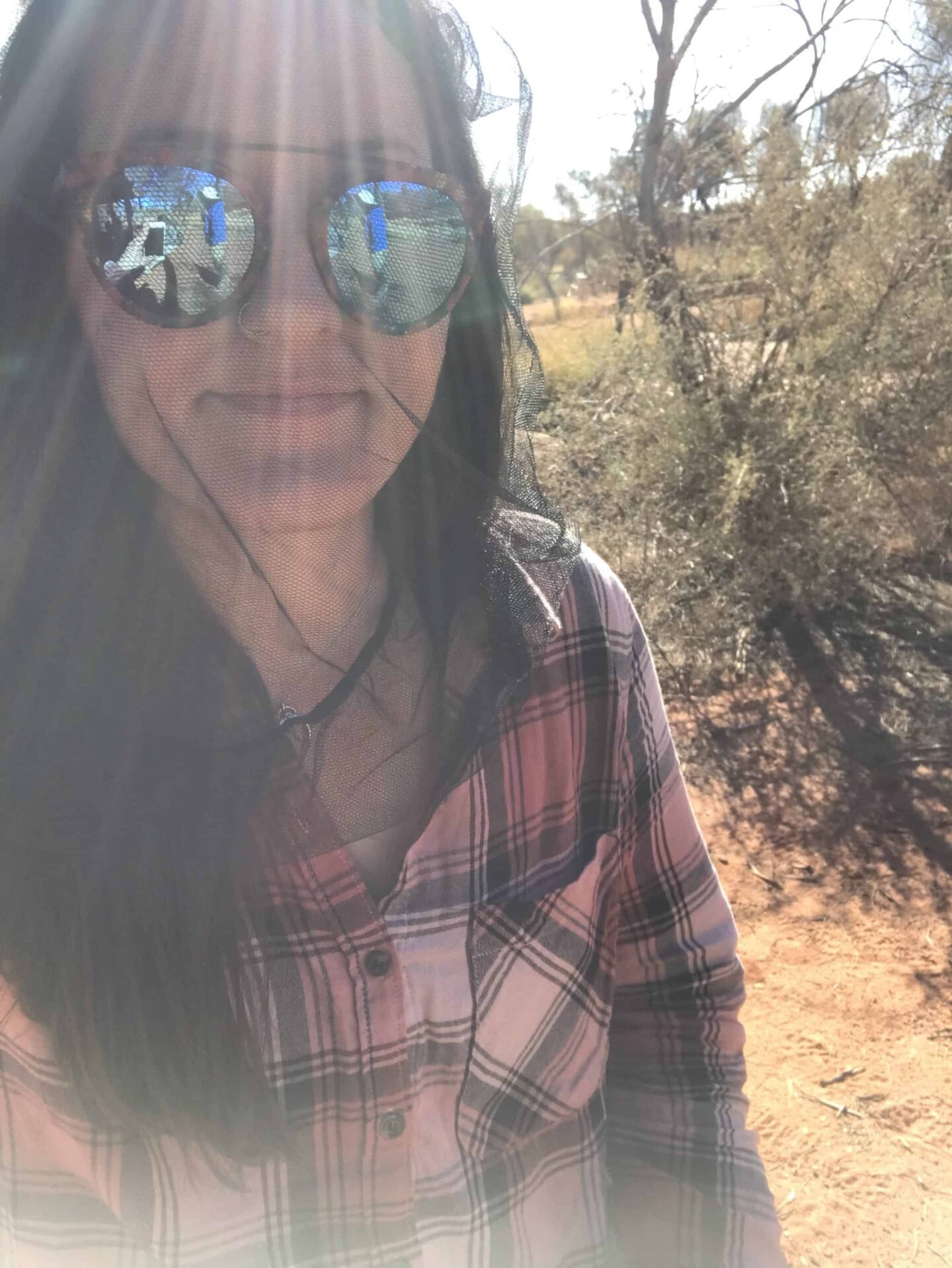

Uluru Sunset
After finishing the walk, our next order of business was to catch the sunset.
This was perhaps one of my most anticipated moments of the trip. For weeks, I’d been dreaming about watching the colours of Uluru change from red to pink to purple to orange as the sun slowly made it’s decent.

The are several lookout spots for sunset at Uluru around the town of Yulara and within the Uluru-Kata Tjuta National Park. Every lookout and sunset offers a different perspective of the vibrant and ever-changing colours.
The most popular sunset spot is the official Uluru Sunset Lookout about 10 kilometres down the road through the entrance gates of the park.
This is where we had our first up close and personal experience with Uluru. I’m sure you’ll recognise this profile shot, and like myself, you’ll be overwhelmed by its incredible size, presence and spirituality.
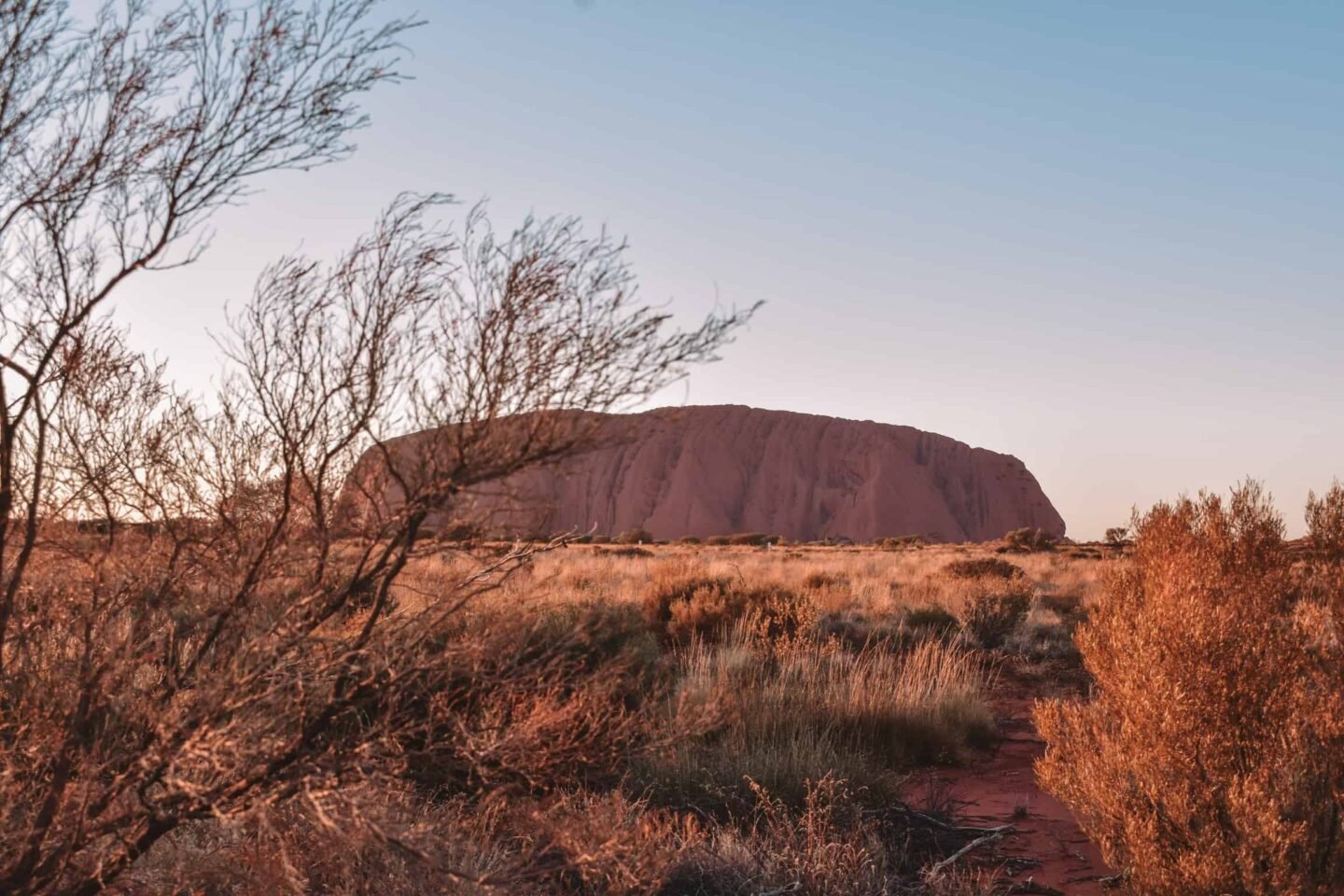
No matter the time of year you travel here, I recommend getting here early. Set up your camp chair and tripod, bring some nibbles and cold drinks and enjoy the magical transformation as the sun sinks below the desert horizon.
It was truly a magical experience.

Field of Lights
After another delicious dinner overlooking sunset at Uluru, I have one more adventure before heading back to the campground.
The Field of Lights is an extra option The Rock Tour allows you to add to your tour. I opted to do the tour as it had been one of my top reasons for venturing into the Red Centre- and it did NOT disappoint.
Picture this: you’re walking through the frigid night, shivering to your core, but spurred on by the blanket of stars just as stunning as the night before. Then, just before you think you’re lost in the middle of the outback at night, you see a light. Then you see two. Suddenly, the landscape before you transforms into a sea of colour that dips and dances and flickers as if singing just for you.
As far as the eye can see gentle rhythms of colour light up the desert.
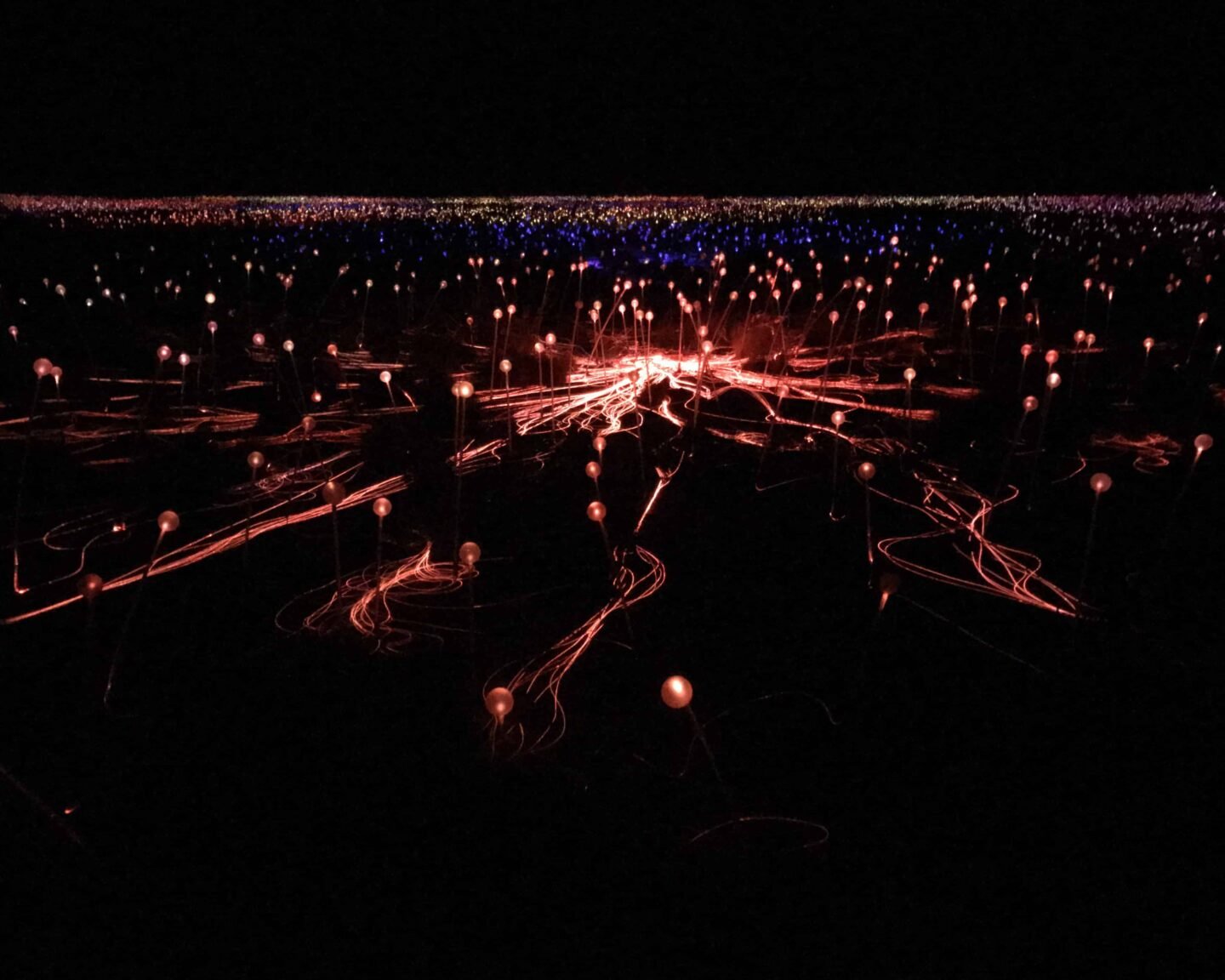

At this point, Bruce Munro’s vision of a colourful desert garden in full bloom almost needs no introduction. Some 50,000 frosted-glass spheres light up the Central Australian night in a rainbow of colours that spread in all directions. The installation found a natural home alongside Uluru and the impressive expanse of the desert and has been proven so popular its tenure has extended well past the life of one year. For some, choosing to do the Field of Lights by camel or helicopter is an option, but for me, nothing beat wandering through the lights themselves with only the stars above for company and the tears of wonder as my guide.
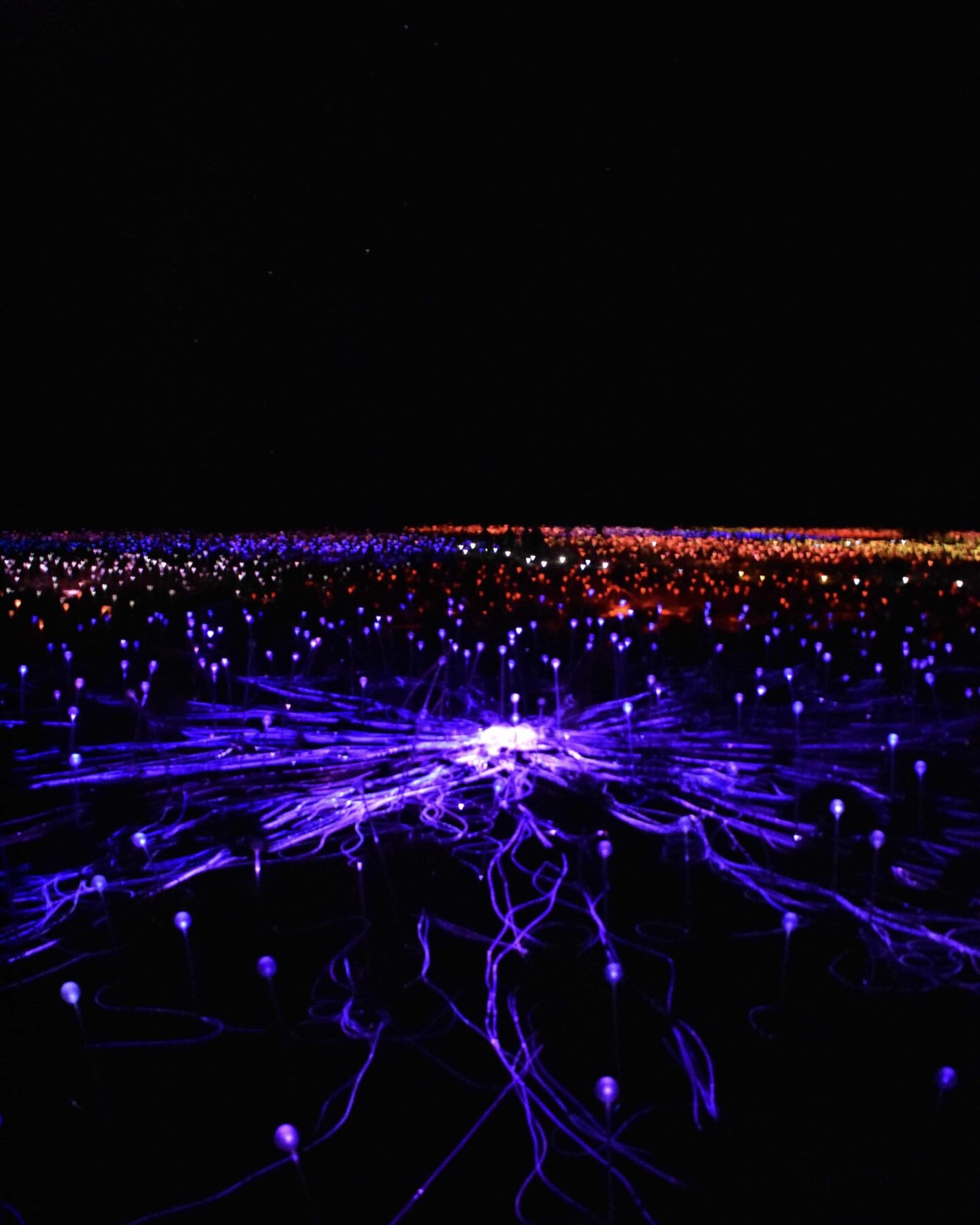
The exhibition, aptly named Tili Wiru Tjuta Nyakutjaku or ‘looking at lots of beautiful lights’ in local Pitjantjatjara is Munro’s largest work to date. Overwhelming in size, covering more than seven football fields, it invites immersion in its fantasy garden of light, the stems breathing and swaying through a sympathetic desert spectrum of ochre, deep violet, blue and gentle white.
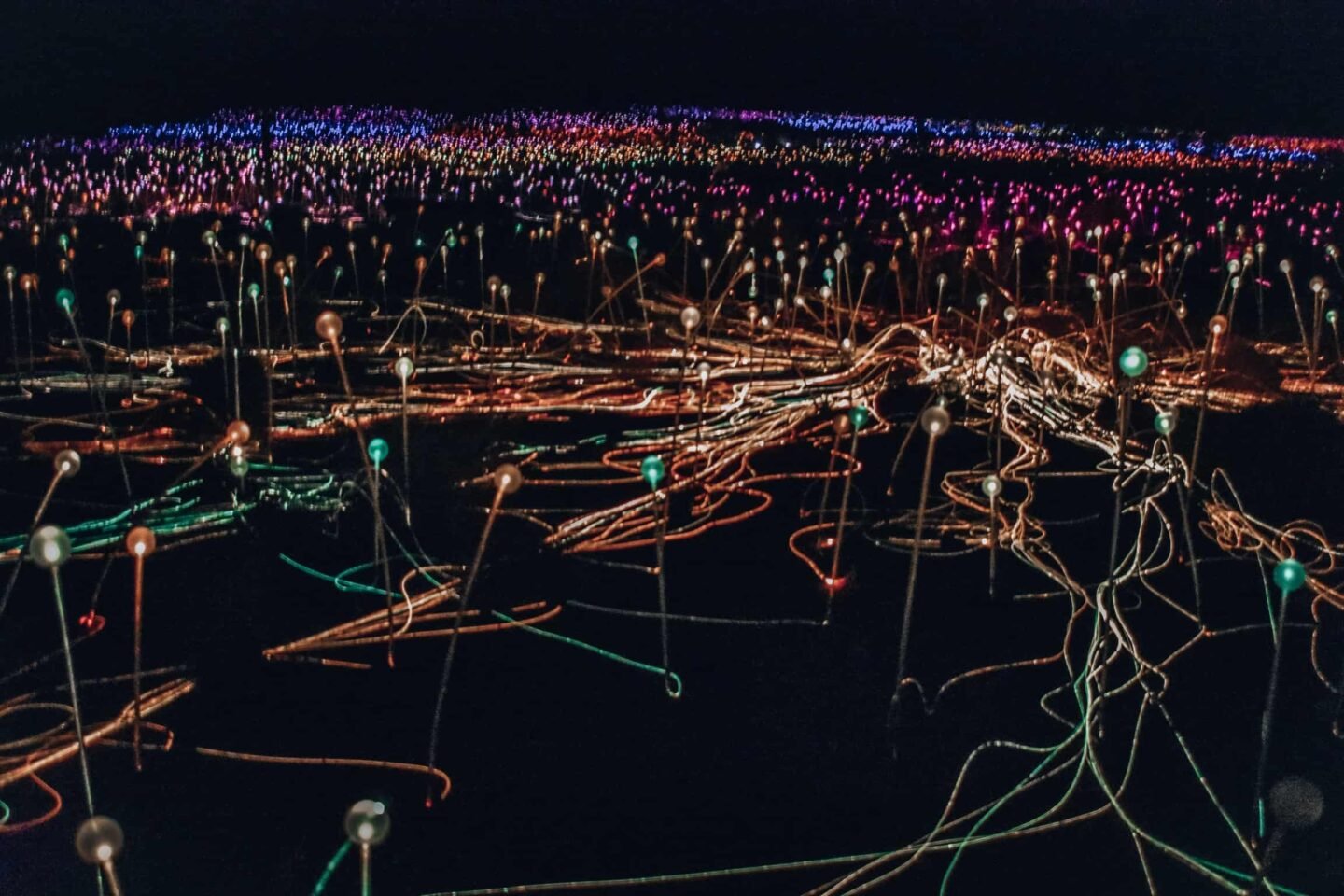
Camping, night 2
After journeying back through a myriad of buses, I sat back in wonder of the experiences I’d already had. Not only had I ventured into the heart of Australia and tackled some of the most bucket-list worthy walks, but I had experienced one of the most incredible light displays in the world.
I was greeted back at the Yulara coach campsite with hot milo, gentle music, and a warm, well-deserved shower. The shower was the first I’d had in two days, and the hot water, ability to use a real toilet, and brush my teeth in a basin was well-received.
After a long day of adventuring the Red Centre, we all agreed an early night was in need! After rolling out our swags (thankfully hidden by the cover of little huts to provide lots of warmth), we each fell into a deep sleep.
Sunrise at Uluru
Waking before dawn is an absolute must when travelling through the Australian Outback, and we weren’t going to miss a single one.
Ben suggested that rather than heading to the overly popular sunrise spot, we head to the same sunset location we had been the previous night because there would be fewer people there. And right he was!
Whilst almost everyone headed to the Talinguru Nyakunytjaku lookout for sunrise, we had this spot all to ourselves.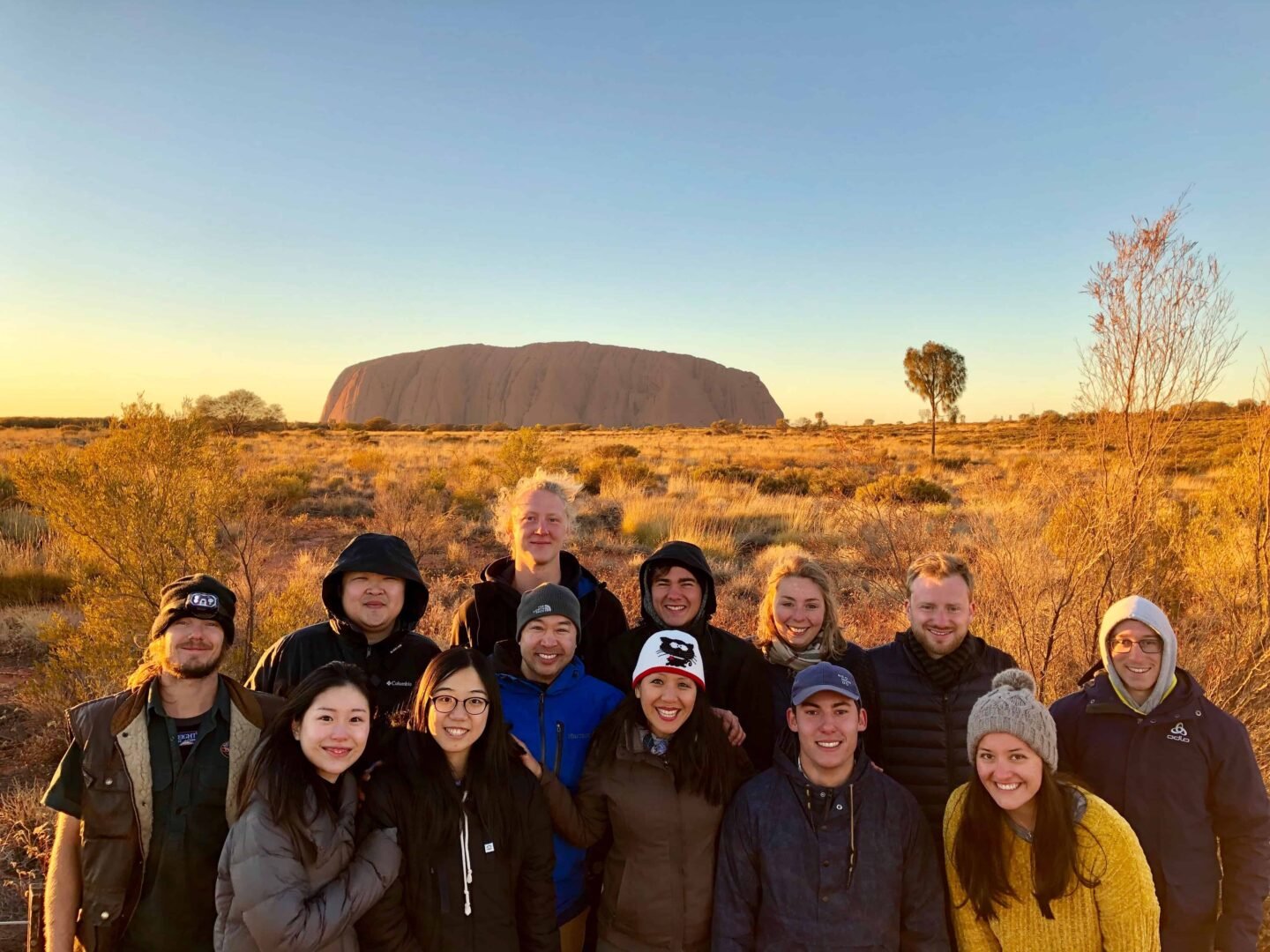

While I must say, this was probably the coldest day of my life, with no amount of clothing or hot coffee being able to warm myself up, it was all worth it for the most stunning views of Uluru!.

And I certainly couldn’t complain about my morning coffee view looking this good!

Uluru Base Walk
With another delicious breakfast overlooking Uluru done and dusted, we drove to the base of Uluru for the base walk.
As we drove toward the monolith, I leant forward and the stark red desert rushed to meet me. The patchwork quilt of spinifex grass, mulga trees and iron-rich red dirt breezed on by. Being up close does nothing to diminish the enormity and mystery of Uluru. In fact, the up-close view gave me a greater appreciation of the Red Centre’s centre, from its prehistoric shell to the partially exposed hints of the network of tunnels within.
It’s almost like a giant brain in the middle of the desert. It certainly makes you stop and think.
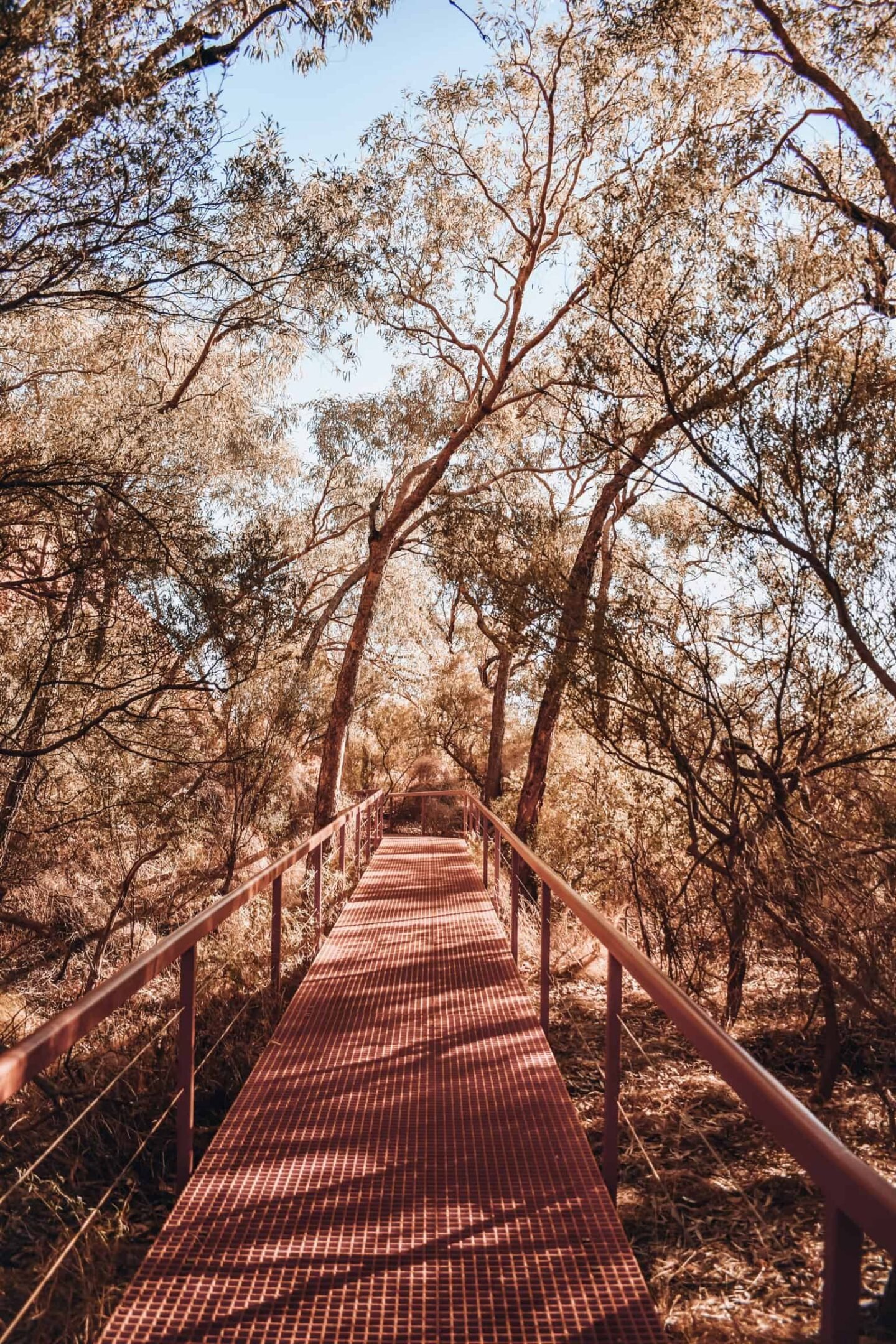
The loop walk is 10.6 kilometres around the whole base of the rock and it took my group around two hours to do it. We started really early in the morning, and so the air was freezing cold and didn’t offer much reprieve for the majority of the walk.
The walk is completely flat with one short sandy section, but otherwise solid footing underneath. It’s peaceful, and a great time to chat with your new friends and take in the wonder of nature.
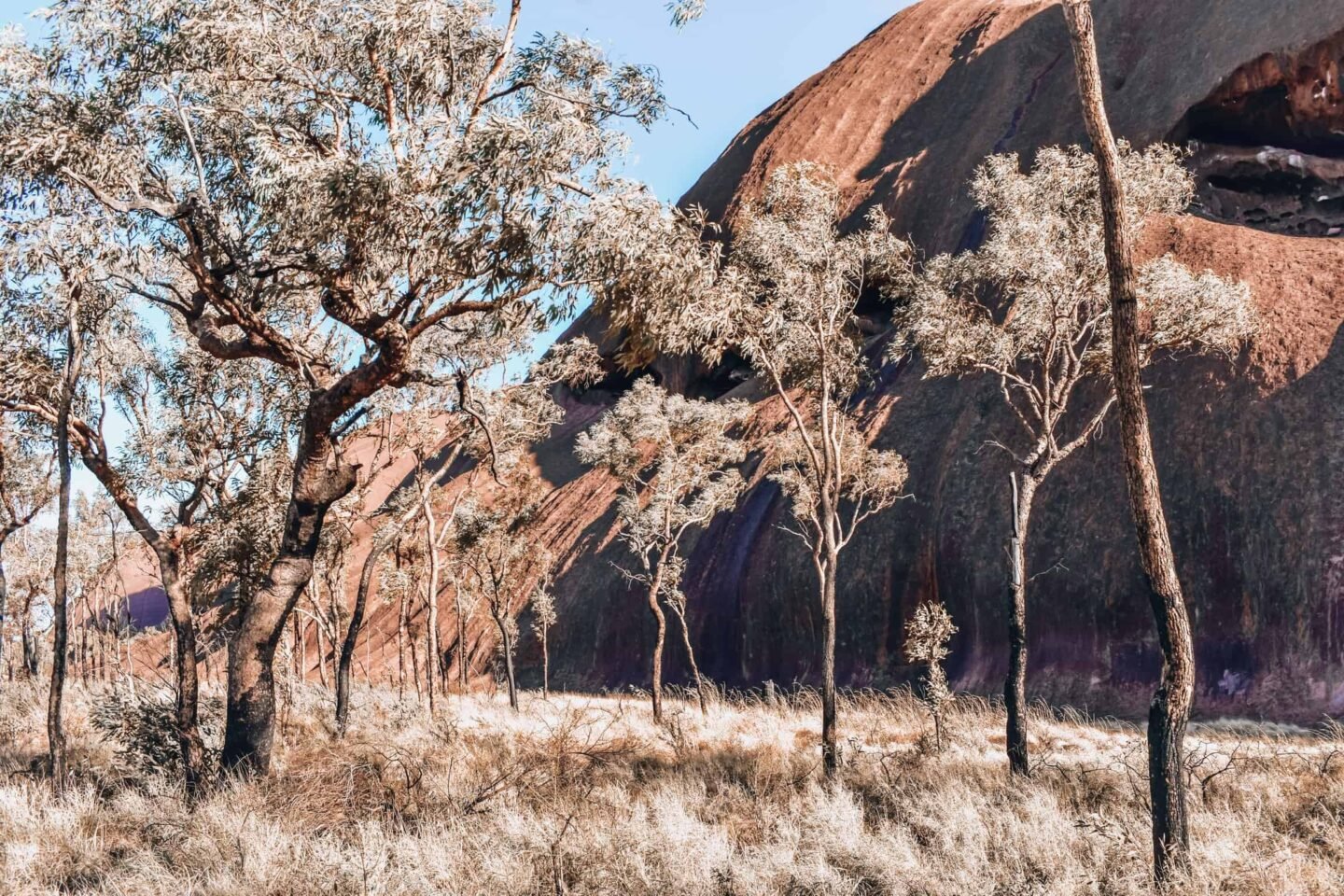
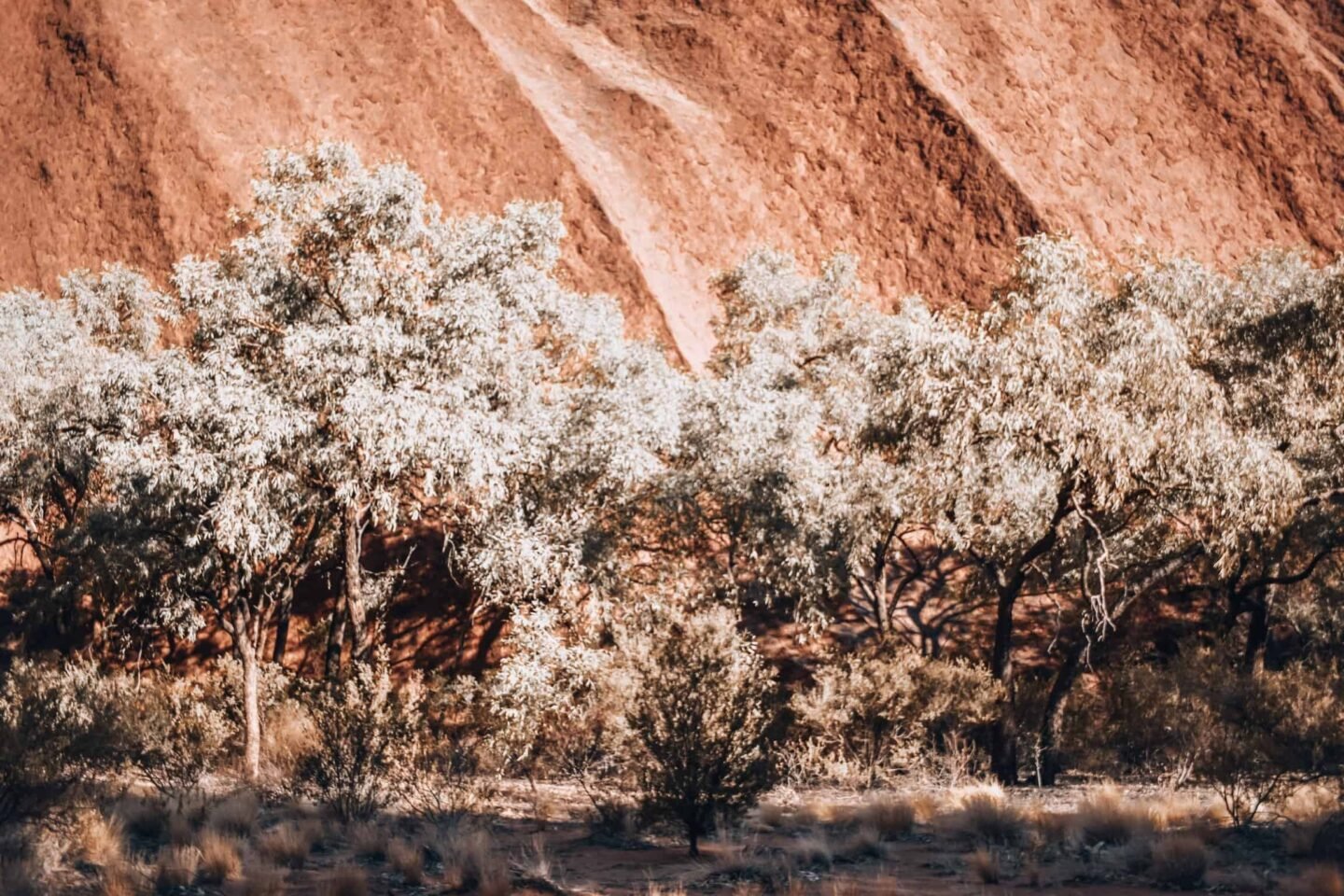
Uluru has been a very spiritual place to the Anangu people, the traditional owners, for thousands of years. Ask most people who visit and spiritual experience is the word they often use to describe it.
And that is exactly what it is.
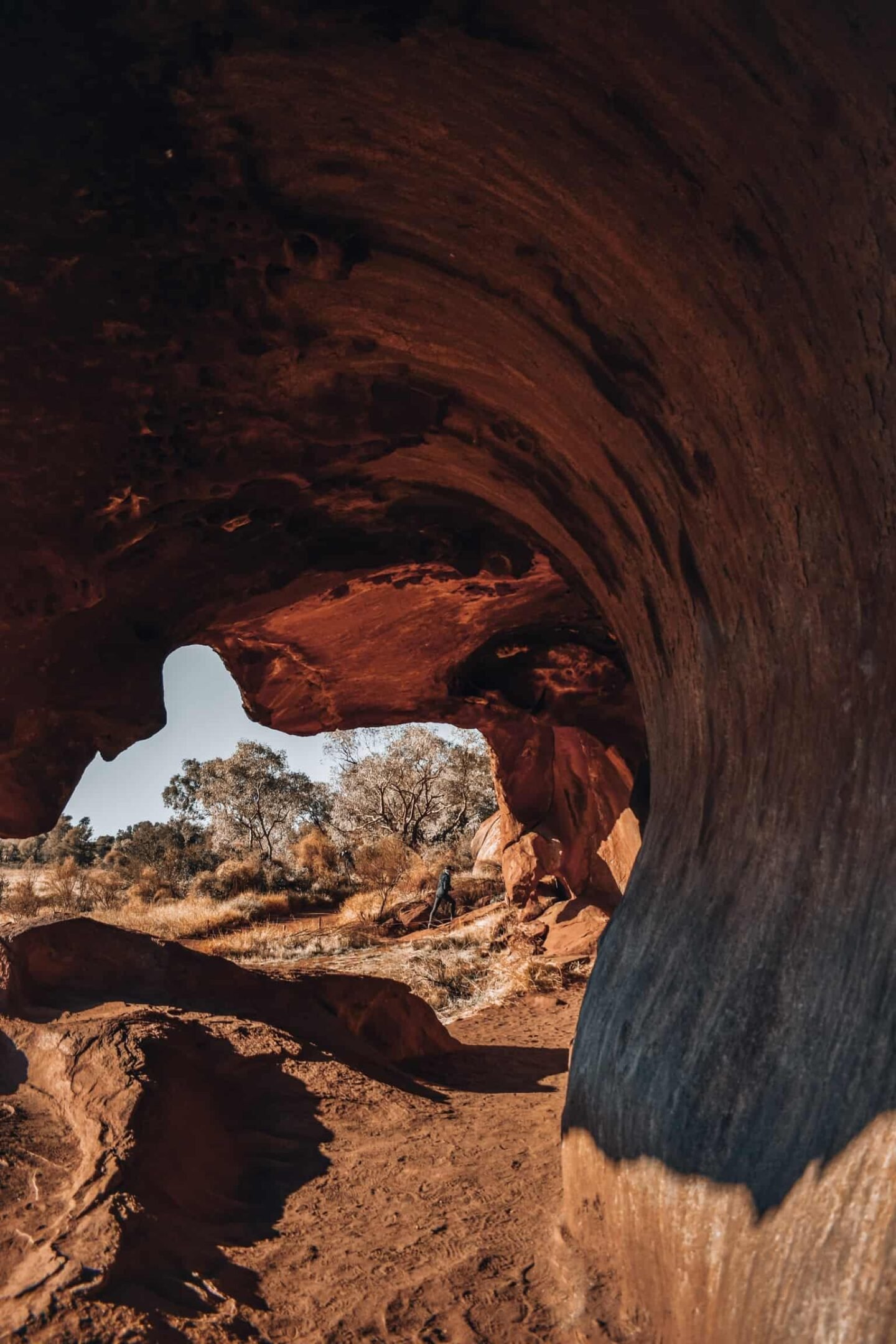
Unfortunately, to many tourists over the years, the significance of Ayers Rock was as an extraordinary inland mountain that demanded to be climbed, touched, and violated. A chain rope was added to the rock face in the late 1950s to make it easier for climbers. The story goes that the man contracted to install the chains was asked to set them at hip height but his uncommonly small stature meant what was hip height for him was thigh-high for most. When tourism boomed in the area, most tourists made a point of climbing the rock, against the wishes of the traditional owners, and against the dangers that warned against it.
Luckily, times have changed. In 1985, Ayers Rock and the nearby Olgas were handed back to the traditional owners and the names were reverted back to Uluru and Kata Tjuta. Today, less than 20 per cent of tourists make the climb. Over the years, 37 people have died attempting the climb, while countless others have seriously injured themselves. At the end of 2019, the climb will be officially closed off to tourists.
End of the Tour
Words can’t describe the overall sense of happiness we all felt upon arriving back in Alice Springs after a full few days of adventuring. We had all come to see Uluru and its surroundings and had left having seen and done so much more.
And what better to celebrate with your new friends than at the local pub with a few drinks and a delicious meal.
To book your Rock Tour and tick off your dream of travelling the Australian Outback, check them out here.
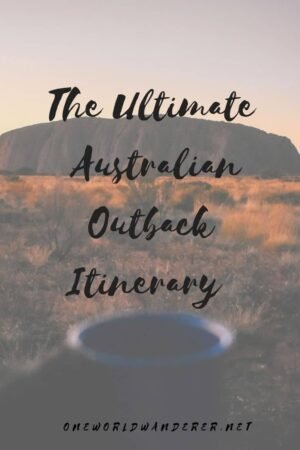

For more Australian Adventures, check out these blog posts:
Falling in Love with Coober Pedy
Townsville’s Top 10 Hidden Secrets You Need To Visit This Summer!
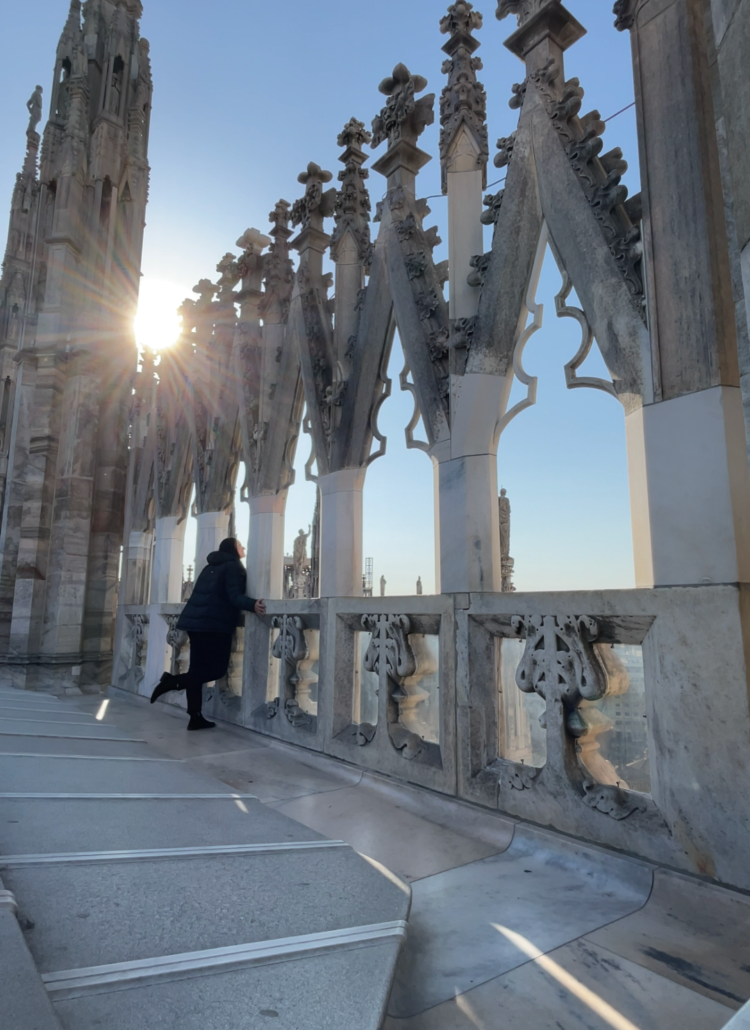
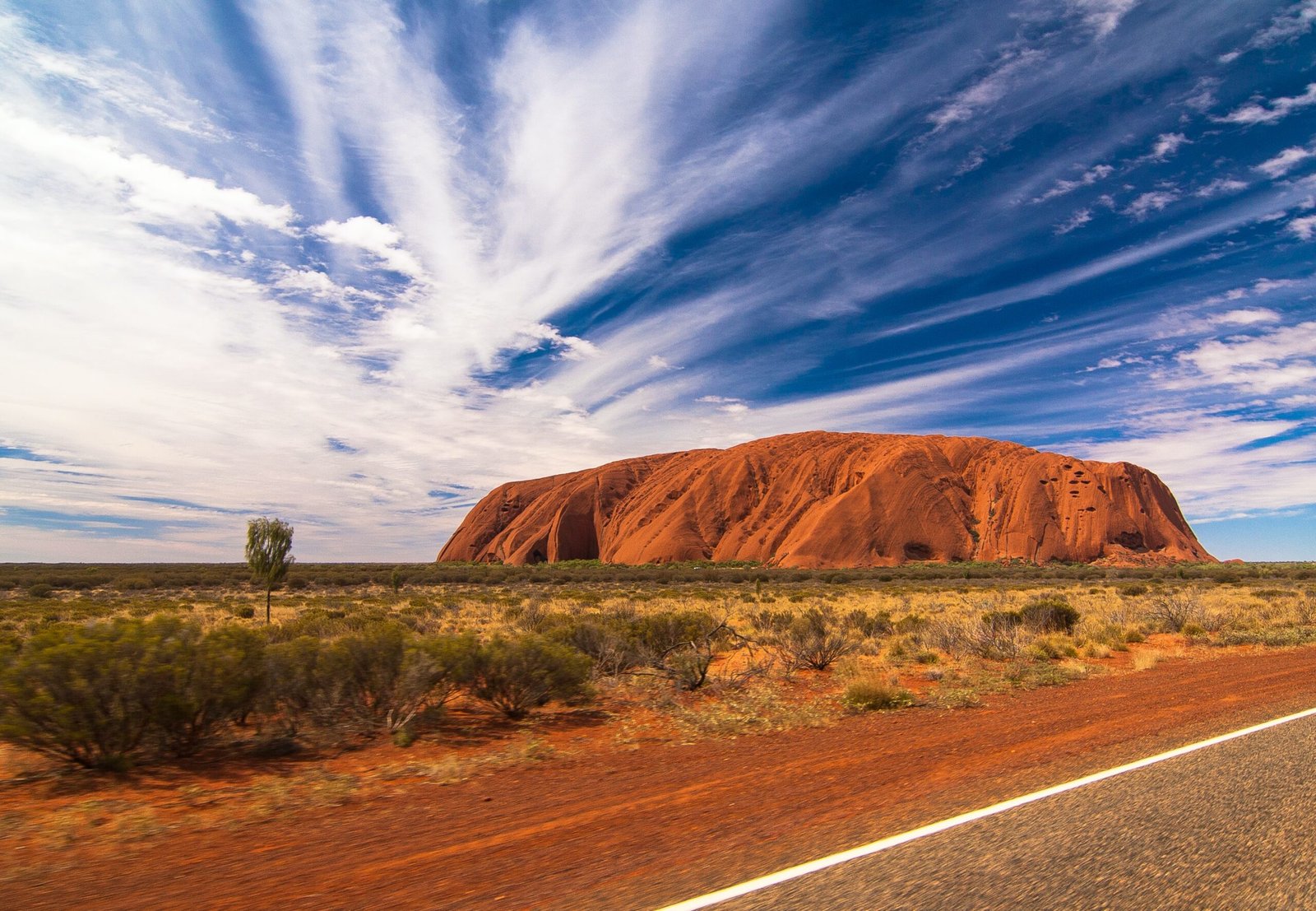

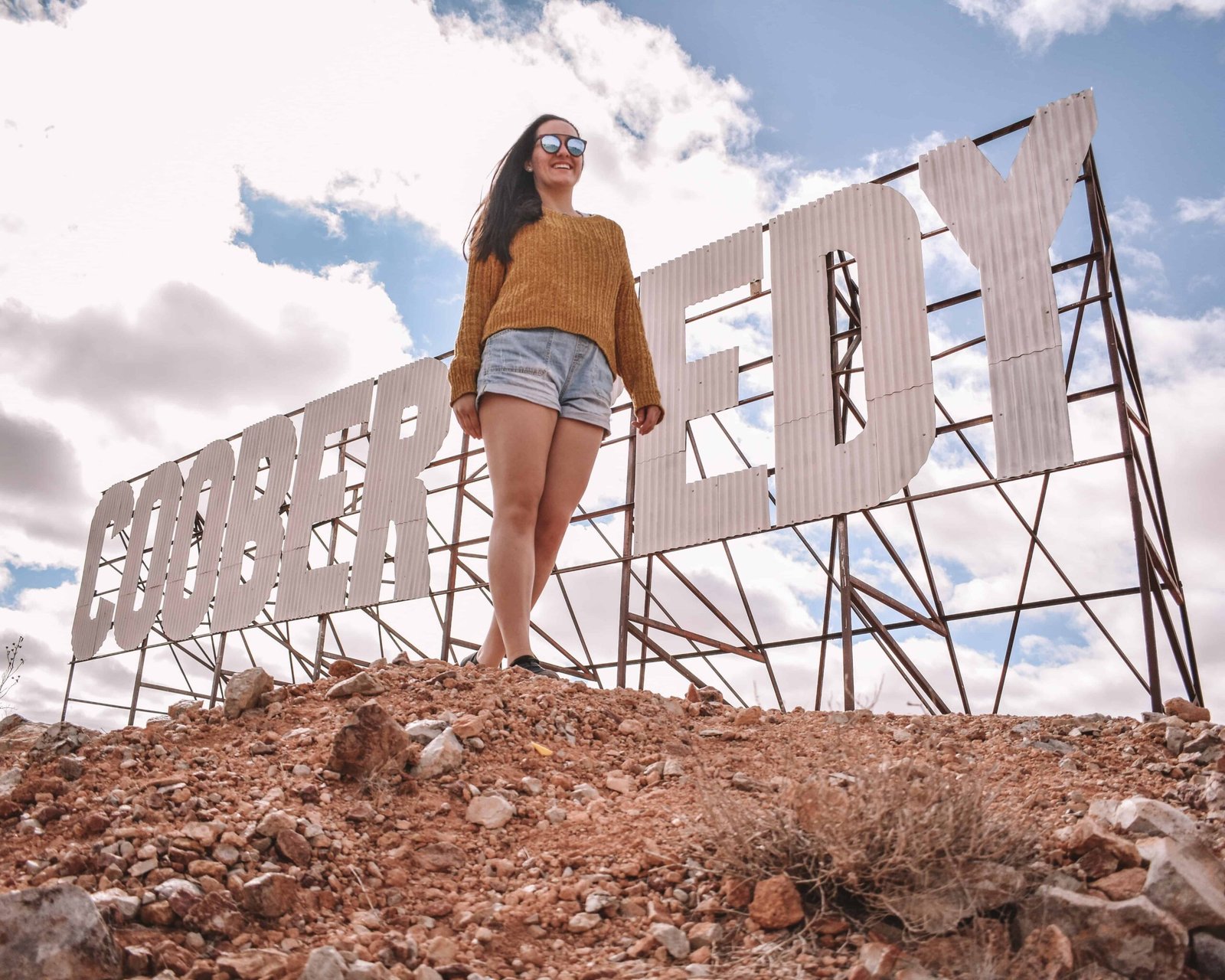
Leave a Reply